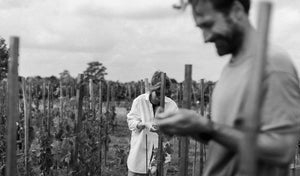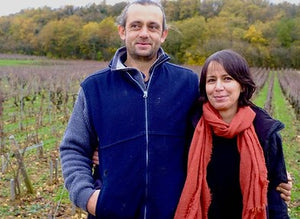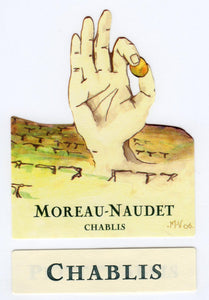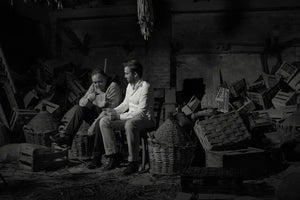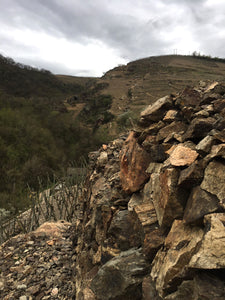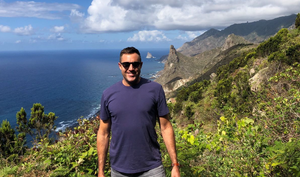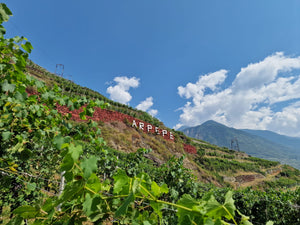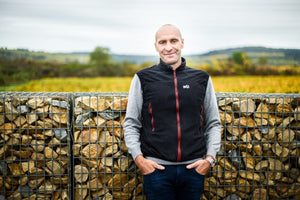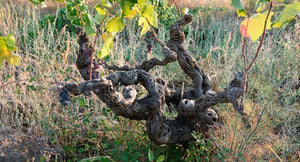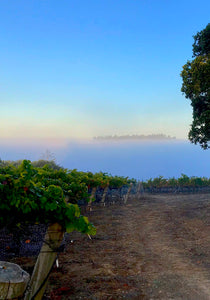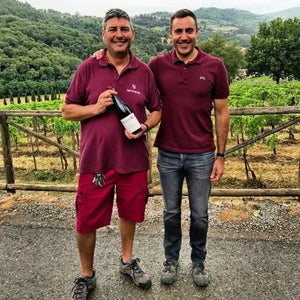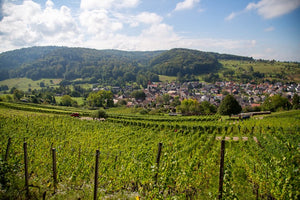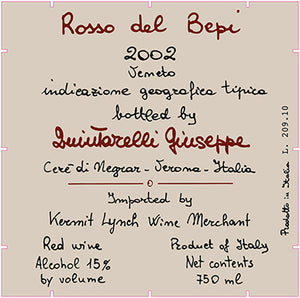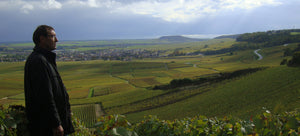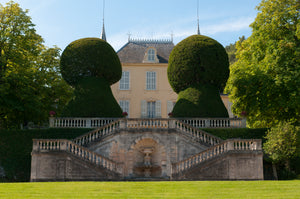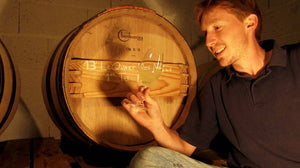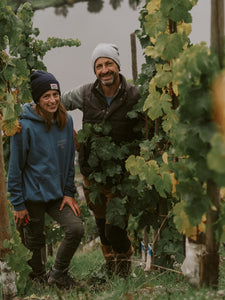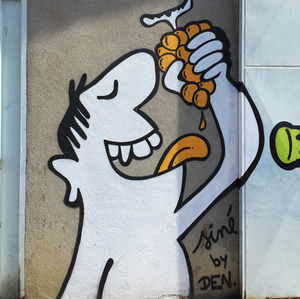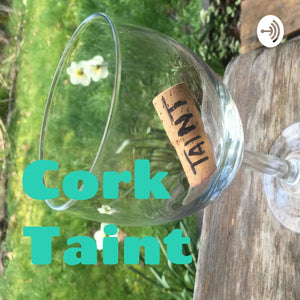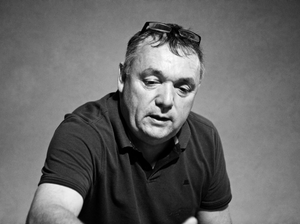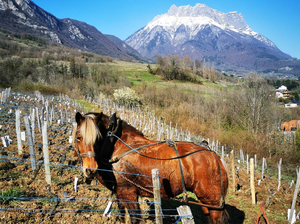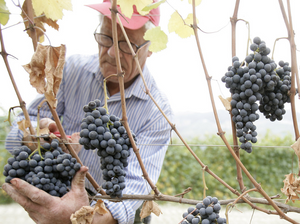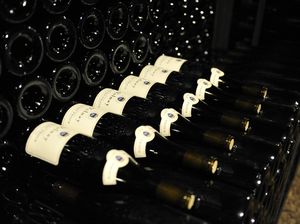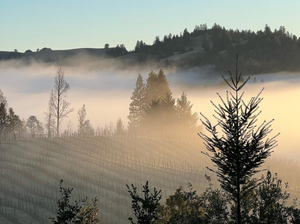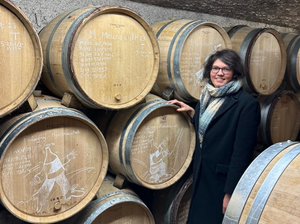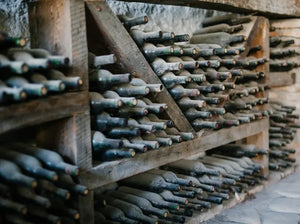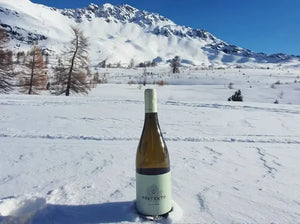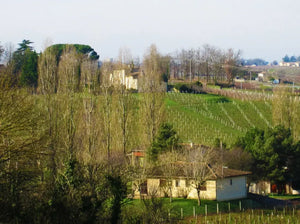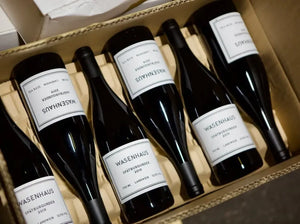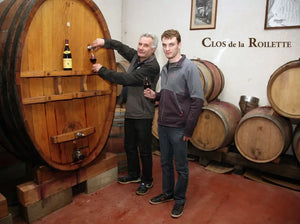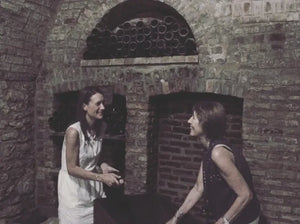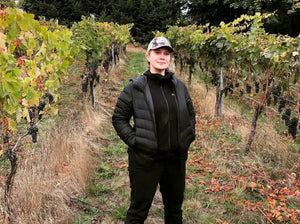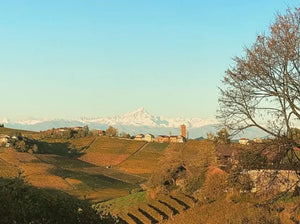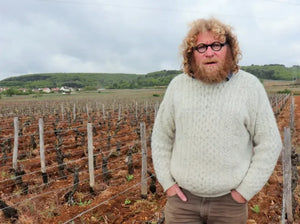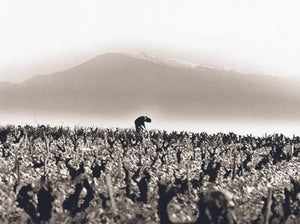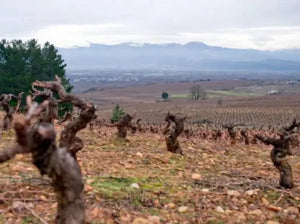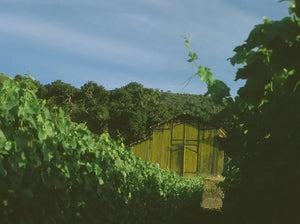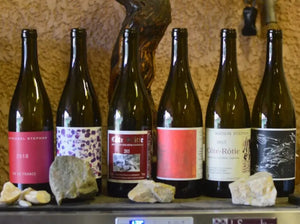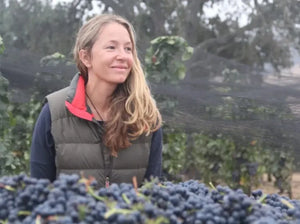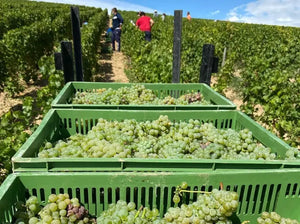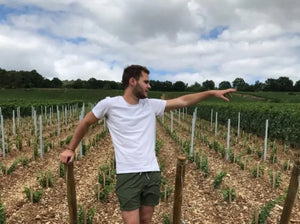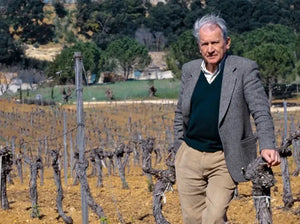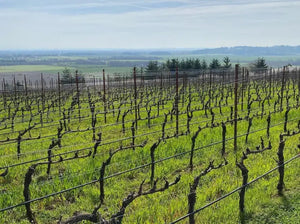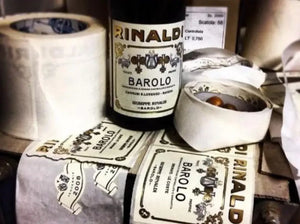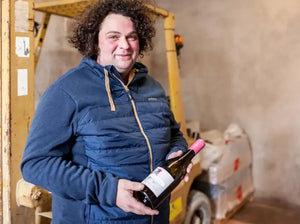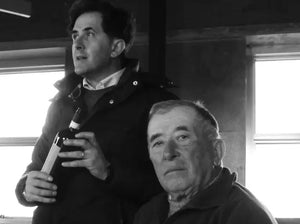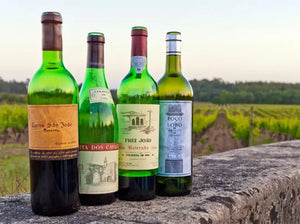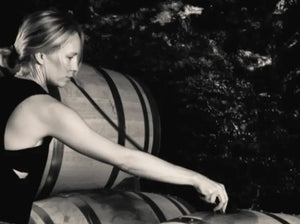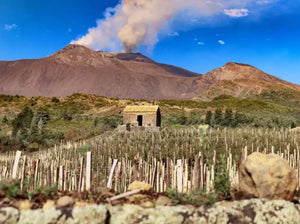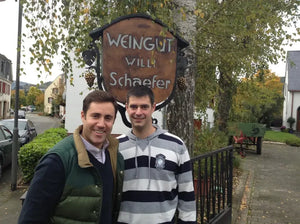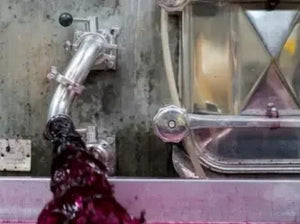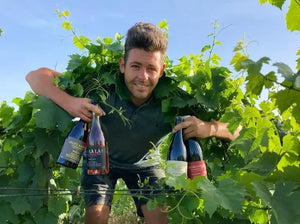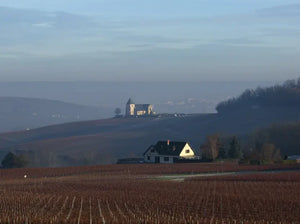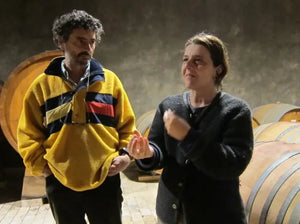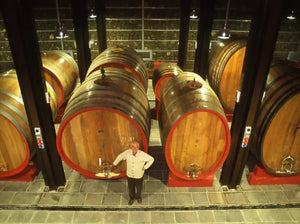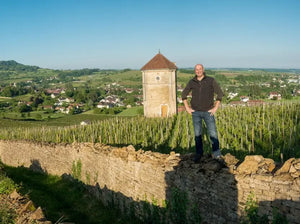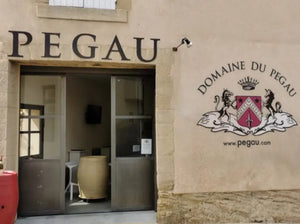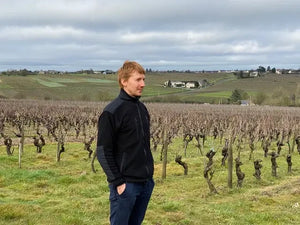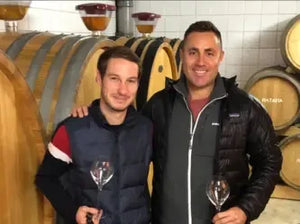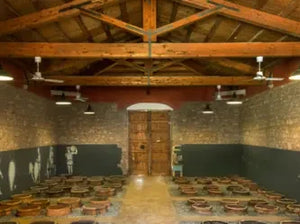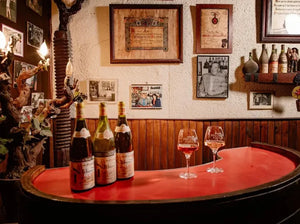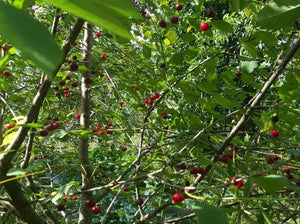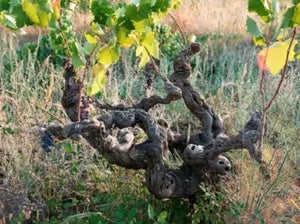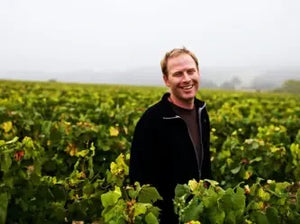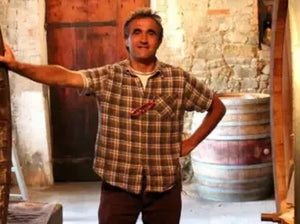Blog
-
Delectable Dijon: Domaine de la Cras
In the hills above Dijon, you can find one of Burgundy's greatest inception stories. It is a fresh departure from a domaine's normal evolution, but the wines in bottle are the most thrilling element from Marc Soyard. In a short time, Domaine de la Cras has gone from obscure to having a cult following.
A little over a decade ago, the city of Dijon purchased a vineyard just outside its limits, and they essentially held a casting call to find a winemaker for the property. The criteria were: The winemaker must be young, have no family vineyard holdings, farm organically, and open the domaine for educational tours. Rent for the land would be paid to the city in 2,000 bottles. Marc Soyard, originally from nearby Jura, was chosen.
Soyard does not come from a family of vignerons but previously worked for Vosne-Romanée's esteemed Domaine Bizot, known for its rigorous vineyard work, minuscule sulfur regimen, and whole-cluster fermentation. Soyard's Pinot Noirs pulled me in for their super crunchy and unadulterated bright, red berry fruit. The aromas are intoxicating even before tasting, and whole-cluster fermentation gives these wines a lifted spice and floral character that just floored me.
His Chardonnay's offer a totally unique take on white Burgundy, coming from this long-overlooked terroir––seamless and classic.
"Cras" Rouge & Blanc are the domaine's top wines from the oldest vines on the steepest portion of En Bessy.
Coteaux de Dijon Rouge & Blanc comes from 30-plus-year-old vines planted lower on the slope, with the rouge seeing 30% whole clusters being included for fermentation in wooden tanks without any sulfur additions.
Tercet is Soyard's lone Gamay––an upfront fruity style with imperceptible tannins.
-
Zero Fluff, All Focus: Jouan Morey 1er Cru Clos Sorbé
I'm often asked which Burgundy domaines should be on the radar for their classic character and no frills personality. The name atop that list, embodying both, is Philippe & Henri Jouan of Morey-Saint-Denis. Their greatest wine from their home village is the Premier Cru Clos Sorbé. The late, great Jacky Truchot once made this vineyard legendary, with bottles now fetching upwards of $2,000. When he retired (sort of) in 2005, he sold all his vineyards—except for Clos Sorbé, as he continued producing a tiny amount from a backyard site he cherished.
Today, Jouan carries the torch, crafting wines of incredible finesse with old-school sensibilities. And unlike Truchot’s now-mythic bottling, entry into this piece of Burgundy history is under $200.
Morey is often defined by what it isn't—neither Gevrey-Chambertin to the north nor Chambolle-Musigny to the south. Its wines trade Chambolle’s red cherry for darker berries, layered with forest floor and brown and rust-tinged earthy notes. And, unlike Gevrey’s muscular structure, Morey retains a grace and lift that always brings me back to a more Chambolle ethos of refinement.
Clos Sorbé centers around the same dark cherry fruit profile, but adding notes of orange rind, cocoa, and smoked game. All wrapped up with great acidity, fine-grained tannin, and unmistakable Premier Cru length and drive. While very structured in its extreme youth, with a few years in bottle, like today's 2020, these expressions are in full blossom.
-
La Rioja Alta Apex: 904 "Selección Especial"It's one of Rioja's great gifts to hold back wine in bottle under the aging requirements of the Gran Reserva designations. La Rioja Alta, alongside its legendary neighbor López de Heredia, stands at the pinnacle of traditional Rioja. In 2015, La Rioja Alta took its flagship "904" Gran Reserva to a new level, introducing optical sorting to select only the finest grapes—choosing berry by berry (not simply cluster by cluster). This precision-driven approach gave rise to a new designation: "Selección Especial."This Gran Reserva comes from 60+-year-old vines, comprised of 90% Tempranillo and 10% Graciano. Wines are traditionally aged in older American barrels. The 2015 vintage produced powerful wines in Rioja, yet what sets this bottling apart is the freshness and fine tannins.You'll find the classic notes of cinnamon, leather, tobacco, coffee, red cherry, and plum up front. But the 904 impresses most by flaunting deeply layered textures, seamlessly woven with an ethereal and haunting finish embodying the pinnacle of Grand Reserva Rioja. Examples from La Rioja Alta dating back to 1973 have been some of the most memorable wine experiences I've ever had.Five families in 1890 from Rioja and the Basque country founded Sociedad Vinícola de La Rioja Alta to make age-worthy, grand wines. Located just across the street from the iconic Lopez de Heredia, La Rioja Alta is also respected as the prime address for terroir-driven Rioja, emphasizing the elegance and transparency of Tempranillo.
-
Volnay Seduction: Jean-Marc Bouley Clos des ChênesAs Burgundy forms the backbone of our selections, it’s no surprise that the #1 question I’m asked is about under-the-radar, younger producers making serious waves. Few names rise to the top of my recommendations quite like Thomas Bouley of Volnay’s Domaine Jean-Marc Bouley. And when it comes to one of the Côte de Beaune's most revered vineyards, Clos des Chênes, Bouley’s rendition is always my first choice.In October 2019, after a tasting with Thomas, I found myself at dinner with a a Côte de Nuits producer and collectors. When the topic of favorite under-the-radar names arose, I mentioned where I had just been, and the entire table enthusiastically agreed. Everyone present had been fortunate enough to experience the deeply concentrated and effortlessly elegant Pinot Noirs crafted by Thomas Bouley. Volnay’s best vineyards, like Clos des Chênes, are the very definition of the “Iron Fist in a Velvet Glove,” and Thomas is one of the few stewards capable of delivering on that promise.Clos des Chênes comes from just a 0.43-hectare parcel of vines planted in 1951 and 1971 near the vineyard's upper portion. Grapes are mostly de-stemmed, fermentation takes place in concrete, and élevage is in 20% new French oak barrels.
Thomas joined the domaine in 2002 to work alongside his father, and under his influence, Domaine Jean-Marc Bouley has steadily ascended into the upper echelon of Côte de Beaune producers. So, why does Bouley stand out in a region teeming with young talent? His wines achieve a rare harmony—melding concentrated, sappy fruit with an impeccable touch of oak. That marriage of precision and depth made an instant impression on me during my first tasting, and the fireworks haven’t stopped since. -
Bona Fide Naturalist: Werlitsch vom Opok
Wineries like Werlitsch in Austria's Styria region perpetuate those dreamy biodynamic farm vibes we've seen springing up in Eastern Europe. Sure, the scenes are breathtaking and make for a good selling point, but what winemaker Ewald Tscheppe produces from his opok-rich soils restores our faith in the far reaches of natural wine.
Our team once blind-tasted the Ex Vero I together. It had a matchstick quality on the nose, followed by white florals, fresh citrus, coconut milk-like texture, and electric acidity on the palate. Still, the wine's focal point was its lively energy and slightly waxy texture. I guessed it was from the Jura, thinking it had a Burgundy gone rogue feeling, but it turned out to be a blend of Sauvignon Blanc and Morillon (aka Chardonnay). Ex Vero is a three-part series showcasing the varied levels of altitude and soil composition on Werlitsch's steep hillside. These vines grow on limestone and clay soil rich in minerals and marine fossils, which locals refer to as opok. Frankly, the wines are unlike anything you'll taste from Austria or elsewhere.
Ewald and his friends discovered biodynamics while studying wine in the early 1980s. As a true devotee of the naturalist movement, he believes that nature always does it better—for him, that means gravity-flow winemaking, natural yeast, no temperature control, and no sulfur. In 2004, Ewald began to apply biodynamics to his family's estate, which also inhabits fruit trees, wild herbs, vegetables, and forests. -
Columbia Gorge Crusade: Hiyu Wine FarmA burgeoning wine scene is forming in the Columbia River Gorge, just an hour east of Portland. In 2010, former Master Sommelier Nate Ready and China Tresemer combined their curiosities for winemaking, farming, and culinary art and created what is now their 30-acre Biodynamic farm and vineyard. When you arrive, it almost feels like stepping into the pages of a Brothers Grimm fairytale. Nate takes a curious, playful, and philosophical approach to farming and winemaking. The fruits of his labor are as distinctive as they are delicious.Eriu Spring Ephemeral is a typical blend of Chateauneuf du Pape varieties, dominated by Grenache. It comes from the easternmost parcel, Scorched Earth, with deep black sand and volcanic soils at the edge of a rocky, desert pasture.Aedin Red Blend comes from a 1.5-acre parcel based on an heirloom clone of Cabernet Sauvignon that came from Chateau Margaux in the 1800s. Like Feis, it also includes other grapes from Southwestern France, but Cabernet Sauvignon is dominant here.
-
Santa Cruz Mountains Maverick
I met Cole Thomas of Madson Wines at a 2019 tasting event highlighting "the new wave of Santa Cruz winemakers." Coincidentally, I was in town that weekend reporting on a story for SF Chronicle about four other young winemakers in the Santa Cruz region. I've been following Madson ever since, and I strongly believe that Thomas and his business partner, Ken Swegles, who also owns and runs a viticulture consulting firm, are among the next names to look to in the Santa Cruz Mountains.
Madson produces terroir-driven Chardonnay, Pinot Noir, and Syrah, three varieties that thrive in the cool, foggy climate here. The majority of vineyards in the region are small, a few acres at most, planted in small clearings vying with the rigid, mountainous landscape, redwoods, and forest.
Madson prioritizes leasing vineyards and overseeing its own farming instead of purchasing fruit. All of the vineyards they work with have been converted to organics, with an additional emphasis on regenerative farming. And to top it off, Swegles and his partner, Abbey Crystal, live on and farm Ascona Vineyard high up at 2,450 feet elevation. In the cellar, it’s natural and spontaneous fermentation, neutral wood, minimal racking, and just a small sulfur addition at bottling.
The Santa Cruz Mountains are considered an ideal place to grow Pinot Noir, and most of the AVA is planted to that. But Thomas says he is always looking for Chardonnay vineyards, and for our sake, I hope he finds them because these are the wines that Max and I are really excited about.
The Chardonnays featured here represent the two sides of the region (ocean vs. mountains). Toyon Vineyard is on a steep south-facing slope in the Soquel Hills; planted on sandstone soils just 400 feet above Monterey Bay, the vines nearly have a front-row seat to the Pacific’s coastal winds, morning fog, and cloud cover. And Les Enfants du Soleil comes mostly from 1960s-planted, own-rooted vines near Boulder Creek where the soil is decomposed schist. Both wines gracefully express cool-climate Chardonnay—fresh, vibrant, mineral—but Toyon has a prominent salinity component while Les Enfants du Soleil carries slightly more depth and concentration.
Both Thomas and Swegles have built their careers here in the Santa Cruz Mountains. After earning a degree in environmental studies at UC Santa Cruz and working a number of jobs in vegetable farming and landscaping, Thomas discovered winemaking while working for local legend, Jeff Emery of Santa Cruz Mountain Vineyard, where he also met and worked with Swegles. Together, they launched Madson Wines in 2018. -
Next Gen in Chablis: Vocoret's Bas de ChapelotEleni and Edouard Vocoret are among the latest producers you should know about in Chablis. With guidance from family and neighbors, including Vincent Dauvissat, the wines from this young domaine are already in Chablis' lead pack. The wines are rich in fruit, yet they're still founded on a Chablisienne core of bright minerality––the kind of white that appeals to the broadest net of palates imaginable.Highlights include Les Bas de Chapelot, located at the foot of Premier Cru Montée de Tonnere, famed for its ideal southern exposure and Grand Cru-like dramatics. It has a deep, saturating presence, an intense grip, and layers of citrus and white orchard fruits unfolding throughout the long finish.These wines came onto our radar three years ago and continue to wow us. The 2021 edition brings a verve and extra dimension of salinity that is so welcome after being preceded by a flurry of warm and dry vintages.Eleni and Edouard met while working harvest in New Zealand. In 2012, Edouard’s family gave the newlyweds their own five hectares of vines to tend to as they saw fit. They sold off the fruit for the first several years while tailoring the vineyard, then produced their first vintages in a family member’s garage. Formerly, Eleni worked as Vincent Dauvissat’s assistant winemaker, where she adopted much of his farming techniques, and Edouard apprenticed in Pouilly-Fuissé. This was an up-and-coming domaine, but now, after a few vintages, it's clear Vocoret is elite and will always be among the first Chablis names we reference.
-
Willamette Apogee: Lingua Franca Chardonnay & Pinot NoirMaster Sommelier Larry Stone and Dominique Lafon of Meursault's Comtes Lafon became familiar with Eola-Amity Hills through the Seven Springs Vineyard. They soon planted vines and built a winery next door (Founded in 2015). They also hired Burgundian winemaker Thomas Savre, who previously worked at Domaine de la Romanée-Conti, bringing another skilled and meticulous eye into the fold.
The Jory and volcanic soils here in Eola-Amity proved to be the ideal landing place for Lingua Franca. They discovered a magic combination of minerality and ripe texture in this particular part of Willamette Valley—the result personifying Burgundy's elusive elegance without compromising Oregon's terroir. The wines from this legendary group of names have surpassed expectations.
AVNI is a perfect snapshot of Eola-Amity's volcanic soils and was the impetus for Lingua Franca. The Pinot Noir shows sweet red cherry, smoke, and wild floral notes, while the Chardonnay is racy, mineral-driven, and seamless.Sisters is one of our favorite American Chardonnays, and has been for many vintages now. Ginger, pear, citrus, nectarine, salted almonds, with a weightless, ethereal mouthfeel. This elicits the Meursault from Lafon with it's perfect balance and precision.Mimi's Mind is about forward, pristine red cherry fruits with great lift and dead-serious definition. It may sound trite, but the balance in Mimi's Mind is a big reason Lingua Franca has skyrocketed to prominence in such a short period of time.The Plow, planted on Gelderman-Jory soils by Larry Stone himself, is thought to be the most expressive and nuanced of the estate, producing a powerful wine with luscious texture and length. -
Côte Rôtie's Wild Side: Jean-Michel StephanIn July 2012, a friend and I experienced our first Bastille Day celebration in epic fashion at the Lapierre's annual feast in Morgon. A few days later, it seemed fitting to meet Jean-Michel Stephan atop the steep terraces of Côte Rôtie, who notes Lapierre as his greatest model.Stephan takes a vinification approach that differs drastically from his neighbors in Côte Rôtie. Inspired by his time in Morgon, Stephan's philosophy employs carbonic fermentation, a process customarily reserved for Gamay in Beaujolais. Still, the most profound bottles hit the same mark as great traditionalists like Jamet and Benetière.As Stephan explained, all clusters enter fermentation tanks free of sulfur additions. He pumps in some CO2, closes the hatch, and walks away. When he returns, the intracellular or carbonic fermentation is complete. This method gives Syrah a less restrained primary fruit note, and the use of whole clusters counters that with spice and tannin, but in the end, it's the fresh streak within Stephan's cuvées I notice first.At first glance, Stephan's wines may seem like Côte Rôtie through a Beaujolais prism, but they offer a unique mineral streak and wildly aromatic range. The dark and brambly fruit is unadulterated by the complete absence of sulfur additions. With decanting, these young wines reveal a side of Côte Rôtie that makes it feel like it's your first time drinking Syrah.Les Binardes is 90% Syrah and 10% Viognier sourced from a single vineyard just below Côteaux Tupin. Aged in stainless steel tanks with zero sulfur additions.
Coteaux Bassenon is 60% Syrah, 30% Sérine, and 10% Viognier (the oldest vines were planted in 1896 and 1902). This parcel is on darker mica-schist soils in the northern part of the appellation, having qualities more commonly found in Côte Brune.
Coteaux de Tupin is 100% Serine. Vignerons remember it as the ancient clone of Syrah, a more oval-shaped berry, providing a darker take on the already wild Syrah variety and doubling down on the violet aromatic notes. Stephan's old Serine vines grow on granitic gneiss and white mica schist soils.En Coteaux is produced only in select vintages, sourced from the oldest Serine vines in Bassenon, and is supplemented with 15% of old-vine Viognier. -
Dreamers of Vittoria: COS Siciliano
There's no better introduction to Sicily's Vittoria than the dream project started by Giambattista Cilia, Giusto Occhipinti, and Cirino Strano (COS) in 1980. These groundbreakers put the once-obscure Frappato and Nero d'Avola on the world map, and their orange wines (Pithos and Rami) are benchmarks for Italy and ideal introductions to this wildly popular skin-macerated category.
Driving from Mt. Etna to Vittoria reminded me just how varied Sicily's landscape and terroir were. Temperatures rose, and the climate turned arid. It was hard to believe the place I was heading was beloved for the freshness and clarity of its wines.
The key? There's a constant breeze going through the Hyblaean mountains, and the vines here are on red clay and sand over a deep bedrock of limestone. The wind helps moderate the inland temperatures, and the red sand cools immediately after sunset. The limestone is responsible for low pH levels in the wine, giving it high acidity and nervy minerality.
I visited Giusto Occhipinti just as they were bottling a new vintage. The wines we tasted were fermented in cement and aged in large Slavonian oak casks, similar to those used for traditional Barolo and Brunello. This technique ensures the wines accentuate crisp, refreshing notes that make them a joy to drink. The most complex wines of COS are undoubtedly the Cerasuolo's––a classic combination of Nero d'Avola and Frappato that screams to me of Burgundy more so than Barolo.
Rami Bianco A skin-macerated "orange" wine from equal portions of white varieties Grillo and Insolia planted on limestone and silica. Macerated on skins for 5-7 days, and aged in concrete vats for 8 months.
Pithos Bianco An orange wine from the white variety Grecanico, planted in subalpine sand at 230 meters in elevation. Native ferment in amphorae with the skins macerating for over one month. Aged for 7 months in concrete and 3 months in bottle. Note: Pithos is the Greek word for amphora.
Nero di Lupo 100% Nero D'Avola from estate vineyards in Vittoria––planted in subalpine sand at 300 meters in elevation. Fermented spontaneously with the skins in concrete. Aged for 7 months in concrete and 3 months in bottle. Syrah is a classic comparison, but Nero is not quite as darkly-pitched or as savory.
Frappato from estate vineyards in Vittoria; planted in subalpine sand at 300 meters in elevation. Fermented spontaneously with the skins in concrete. Aged for 9 months in concrete and 3 months in bottle. Lighter in color and less tannic than Nero d'Avola. Pinot Noir is a classic comparison.
Cerasuolo di Vittoria Classico 60% Nero d'Avola and 40% Frappato planted on sand, limestone, and silica. Aged in large Slavonian botti for one year, then one year in concrete.
Cerasuolo di Vittoria Classico della Bastonaca 60% Nero d'Avola and 40% Frappato from the Bastonaca vineyard. Soil is very sandy with clay and oxidized iron. The most complex and age-worthy of today's lineup.
-
Alt Rock Champagne: Vouette & SorbéeBertrand Gautherot's Vouette & Sorbée epitomes Aube Champagne's avant-garde. Since planting his vines in 1986 and bottling his first champagne in 2001, he has stood as the shepherd for this southern zone's revival. Certified biodynamic in 1998, his 5-hectare estate covers three vineyards of the same soils commonly found in Chablis to the south: Kimmeridgian and Portlandian.In the small village of Buxières-sur-Arce from this most southern zone of Champagne, a little more warmth and sunshine makes these non-dosage wines anything but austere. They are incredibly charming and enveloping upon release and hard to resist opening. However, some of my most memorable experiences with champagnes have come at the hands of aged Vouette & Sorbée. There is nothing to compare them to in the Aube, Montagne de Reims, Vallée de la Marne, or the Côte de Blancs.
Many have dubbed the 100% Chardonnay Blanc d'Argile "baby Selosse," and I can see why with its ripe and complex waxy yellow fruits with slight oxidative notes that are countered by intense salinity. At the opposite end of the cellar, you'd find the 100% Pinot Noir Fidele, which carries red berry fruits with supreme underlying mineral tension. The micro production finalés are the amphora-raised Textures (100% Pinot Blanc), Sobre (100% Chardonnay), and Extrait (100% Pinot Noir). All wines are produced in very small quantities with low sulfur additions at bottling. -
Dry Riesling Wizardry: Drops of Gold from Koehler-Ruprecht
Magical is a word that adequately sums up the Koehler-Ruprecht estate in Germany's Pfalz region. The wines bear little resemblance to their neighbors nor those just across the border in France's Alsace. Though Riesling is the focus here, a supernatural element in all of their wines makes them stand out among their contemporaries. These are some of the most fascinating wines on earth, and the extreme hands-off approach here is mainly responsible for that singular quality.
The winemaking has remained the same since the early 18th century when the winery was established. Ferments occur completely naturally and spontaneously. Aging takes place in larger old German oak barrels. The vineyards are worked without herbicides, pesticides, or irrigation. The sweet spot of the holdings comes from Kallstadter's famed Saumagen vineyard, which translates to "pig's stomach" due to its shape. The Pfalz region is home to an amalgamation of soils, much like its neighbor Alsace across the border. Howerver, in Saumagen, limestone takes center stage and bears the most responsibility for this site's crystalline nature and peerless transformative abilities in bottle.
K-R produces Rieslings dry, off-dry, and sweet, but their trocken (dry) bottlings really hit the mark for us. With age, these begin to convert into absolutely mystical wines. Their calling card is a faint cotton candy note that slowly develops, but the brilliance is the absence of confectionary sweetness. The protective influence of the Vosges mountains to the west gives the Pfalz the lowest amount of rainfall in Germany. This abundance of sunlight gives ample texture and full-throttle ripeness. Finding wines from the Pfalz that avoid getting a little chunky can be a tall task. But, K-R's dry versions always carry a brilliant mineral streak that's simply mesmerizing in the way it stands up to the golden apple, sweet corn, and ginger, and that quintessential cotton candy note.
Different designations, such as Kabinett, Spätlese, and Auslese, refer to the ripeness level at picking. Auslese will show more density and power. The earlier picked Kabinetts will show more delicate and agile. Spätlese ripeness falls in the middle. Each bottling today is fermented dry.
-
Dolomite Dynamics: Foradori Teroldego & Singular Whites
The magical wines from the Foradori estate in Trentino's Dolomite Mountains have been well-documented here before, and I find an added layer of refinement and precision with each release. If you're curious about Italy's extreme alpine setting, Foradori is where I recommend you turn first.
Teroldego is an esoteric variety that opens with dark plum and licorice, followed by softer floral and herbaceous qualities, and finishes with a finely pronounced minerality. From the first sip to the last, Elisabetta's wines are constantly changing and fascinating to no end. The entry-level teroldego ages in neutral barrels and cement tanks while the old-vine, riserva-level "Granato ages in old foudres.
Elisabetta's father unexpectedly passed away while she was still in enology school, and after graduating, in 1984, she was thrust into harvest and production thereafter. Though her winemaking garnered awards in the 90s, the wines came into their own when she adopted biodynamic principles, eliminated lab yeasts, lowered sulfur additions, and included riper stems in the ferments. Visits with Giusto Occhipinti of COS introduced her to the use of clay amphora for aging. -
Rediscovered Bordeaux: Chateau Le Puy
In college, a Médoc was my epiphany red wine moment. In just one sniff, my growing fascination with wine shifted from California to France. Regrettably, those thrilling experiences via Bordeaux don't really come around anymore. The point-chasing, over-extracted, over-oaked, ripe-beyond-recognition style set in motion in the mid-80s has changed the region for the worse, and the pendulum has to swing back. Yet, terroir-driven producers do still exist.
Situated between Pomerol and Saint Emilion on the second-highest point along the Gironde estuary, Chateau Le Puy is a Bordeaux estate rooted in sensibilities more commonly found in Burgundy. The wines' finesse, transparency of place, and approachability are worlds apart from the stylistic norm in this revered region.These vines have been farmed free of chemicals since 1610, and today, full biodynamic practices are employed, with work done by horse. The estate's plantings include 85% Merlot, 7% Cabernet Franc, 6% Cabernet Sauvignon, and small percentages of Malbec and Carménère on an amalgamation of red clay, silex, and limestone soils.In addition to organic and biodynamic farming, their fermentation and élevage methods are also considered uncommon. Infusion and semi-carbonic methods limit the extraction of tannins, providing soft texture and bright, open-knit fruit out of the gate. Aging in large foudre preserves all of that backbone of mineral tension, bringing a freshness missing from the surrounding chateaux.The WinesDuc des Nauves sits at the lowest elevation on the property on a sandy limestone parcel and is fermented and aged exclusively in cement. It's one of the best values available in Bordeaux.Emilien is the main wine of the chateau. Its personality shows silken tannins and elegance that neighboring Pomerol is revered for. Aged in century-old foudres and neutral 228-liter Bordeaux barrels.Bartélemy comes from "Les Rocs," a parcel of old vines planted on deep limestone. Its structure, saturating texture, and persistence rival those under the region's famous classifications of 1855 and 1955. Aged in 228-liter barrels (Less than 10% new). -
Legend in the Making: Jura's François Rousset-MartinWhile Jean-François Ganevat and Stephane Tissot bridged many into the Jura (ourselves included), the name that has stirred us the most in the last few years is François Rousset-Martin. This 1,000-case annual production domaine was founded in 2007, but François has worked in wine his entire life. He began being imported a few years ago by Kermit Lynch––only Lynch's 2nd venture in Jura after Ganevat. When we first tasted the lineup, we were all blown away and immediately understood why Lynch waited decades to find a worthy addition to Ganevat.Rousset-Martin follows a similarly natural-minded approach, but the wines show more consistency. While the intense characteristics we love about Jura whites come through loud and clear (faint nuttiness, exotic orchard fruits, superb finesse), there's also a buffering salinity and lighting nerve under the wines that give them the total package.
François works in the non-oxidative style, ouillé, meaning barrels are topped up, versus the oxidative sous voile style. From the top wine today, Vigne aux Dames Savagnin, to the four brilliant Chardonnay cuvées, to the mind trip of a wine that is "Aligatõ," these whites are masterful in their composure and graceful contours––they follow a Burgundian aesthetic that grew from François' youthful days spent alongside his father who was a microbiologist for the Hospices de Beaune.The reds follow that same lean and silky frame that Ganevat introduced to us, but here, they are void of the volatile acidity and brett that can plague some bottles. These reds are clean and precise, with an intensity of fruit carried in a mid-weight package that makes them so easy to drink and with personality in spades. Cuvée 909 is the best Jura Pinot Noir I've had to date, and the Fleurie Poncié from one of the best vineyards in Beaujolais is a WOW wine in every sense that diverges from the region's other stars in its more linear focus that calls to mind his Burgundian roots.François farms almost two dozen small parcels (a hectare or less) in Château-Chalon and Côtes du Jura. Like the rest of the Jura, the soils are abundant in clay, but limestone and marl represent the core of the domaine's terroir.Wines are vinified parcel by parcel with little to no sulfur and bottled unfined and unfiltered. A natural approach in the cellar, with classic wines in bottle. -
2022 Domaine Dujac: Charm Personified
A year living in Burgundy was an experience unlike any other. Studying French, meeting new friends, and learning all about the fabled domaines and vineyards from the ground up was a dream for me. Without a doubt, the highlight was the opportunity to stage at Domaine Dujac, starting in the summer in the vineyards and cellar, and then the cuverie through harvest. As much as I learned working, I think the daily lunches and dinners with the Seysses family were even more educational. And it was getting to know the most generous family in Burgundy that was the ultimate reward of my 2012 abroad.
Below is a tour through Domaine Dujac's parcels offered from north to south.
Gevrey Chambertin is home to Grand Cru Charmes-Chambertin, the largest of the village. The holdings here encompass several parcels with different expositions—a true representation of this iron-rich site. There is a power and dark spice here synonymous with Gevrey, with a grace befitting Grand Cru status. Premier Cru Aux Combottes is surrounded by Grand Crus Clos de la Roche, Latricières-Chambertin, and Charmes-Chambertin, and it shows it's more than your typical Gevrey 1er.
The Morey Saint Denis "Premier Cru" cuvée holdings are just north of the domaine. Further up the slope, we come to the fabled Clos de la Roche and Clos Saint-Denis––the largest Grand Crus of the domaine and the quintessential Dujac bottlings. Clos de la Roche is powerful, with dark earth. Clos Saint-Denis is slightly more lifted and ethereal.
Moving south to the village of Chambolle Musigny, the Grand Cru Bonnes Mares is sourced from vines in the white and red soil that differentiate the vineyard. Bonnes Mares shows the elegance of Chambolle with a powerful structure that calls to mind a slight Morey influence. The "Village" Chambolle Musigny cuvée comes from a vineyard with noticeably white and chalky earth. In turn, the wine is very fine. Premier Cru Les Gruenchers is arguably the most important vineyard of the domaine, as it's the source for most of the selection massale replanting that began in 1968 and resumes today. It's a vineyard that gives the impression of walking through a museum––the vines are beautiful and perfect in every way. The wine is prototypical Chambolle with a lacy texture and full of perfume that's hard to get past to finally take your first sip.
Vosne Romanée is home to the most exotic spices of Burgundy. Premier Cru Beaux Monts is about a marriage between a firm structure and a racy personality. Premier Cru Aux Malconsorts is a stunning wine and Grand Cru quality in all but name. Malconsorts lies directly south of La Tâche and shares that same quality of weightless texture and magically long finish. Grand Cru Echezeaux is always centered around its exotic spices and suave tannins. Although it can age for decades, it's always one of the most approachable Grand Crus of the Côte de Nuits. -
Heaven Sent Albariño: Nanclares y PrietoLegendary U.S. importer José Pastor has been the gateway to many new Spanish discoveries, including Envínate and Luis Rodriguez. Alberto Nanclares and Silvia Prieto in Rias Baixas marked a massive shift in my understanding of descriptors like "crystalline" and "acid-driven" regarding Albariño and the Spanish white wine category as a whole.Like Vincent Dauvissat's Chablis, an element of clay in the soil (mixed with decomposed granite) gives these wines a gorgeous texture that stands out from the rest of the pack. Nanclares y Prieto produces a powerful and saturating style of Albariño still founded upon fresh citrus and orchard fruits, with a salty, long finish. These have become my Spanish white obsession over the last few years, and I take every single bottle offered from José."Alberto Nanclares": The flagship wine of the estate. A blend of eight east-facing parcels on decomposed granite and sandy loam. Aged in used French oak barrels.Soverribas: Vines up to 100 years old from three west-facing parcels on sandy, granitic soils with clay deposits. Fermented and aged in a 2200L neutral French oak barrel.O Son Das Pisadas: 100% Mencia from the ‘Eira Padín’ parcel in Rias Baixas. Vines are trained high in the espaldera method. Soil is sandy loam over granitic bedrock.Minato da Rana: 100-year-old Mencía and Garnacha vines on granite in Ribeira Sacra, supplemented by 10% Palomino and Godello.
-
Bona Fide Cornas: Domaine ClapeA visit to the Northern Rhone on my birthday started by hitting the road from Burgundy at dawn. The anticipation for the tour's next stop was all the fuel I needed: Domaine Auguste Clape.The style here has consistently pushed for maximum ripeness, picking at the last moment before the ominous fall rains begin. These fruit-forward Cornas from porous granite soils endow tremendous structure but with a pleasurable side of lusciousness. It's often argued that of the Big Three, including Hermitage and Côte Rôtie, Cornas offers an up-front approachability thanks to its southern and warm amphitheater setting. However, the savage scorched earth quality where Cornas derives its name is the foundation of this fabled domaine, and Clape captures all of that wildness.Clape's vineyards in Cornas span over ten parcels, including Allemand's Reynard and Chaillot and Nöel Verset's Sabarotte. This dizzying array of terroir plays a huge role in many decades of success. The wines are produced most traditionally with 100% whole cluster fermentation and aging in old barrels, with the two Cornas cuvées seeing 22 months in large foudre. When the opportunity arises to open Cornas with many decades on it, Clape is simply bulletproof. These young wines should not deceive you by their infancy's charming nature––they will go the distance to be enjoyed by generations to come.
Finding adequate words to place Auguste Clape in the context of Northern Rhone's history is difficult Auguste started bottling under his name in 1955 and stopped all négociant sales in 1968. Sadly, the day after I visited his son Pierre-Marie, he passed away at 93. Auguste pioneered the Northern Rhône in the company of Noël Verset and Raymond Trollat. -
Razor's Edge Last Dance: Enfield's Haynes Old Vine ChardonnayJohn Lockwood's 2015 Haynes Vineyard Chardonnay was one of the most memorable California wines ever tasted. 2021 is the last vintage John worked with this revered old vine section of the iconic Haynes Vineyard.Sommeliers have blinded it as Pierre-Yves Colin-Morey Meursault. When tasting, descriptors like "laser," "weightless," and "palate-staining" flood the mind.Haynes, located in Napa's coolest AVA, Coombsville, is home to a special parcel of 55-year-old Chardonnay vines. These same vines were the source of John Kongsgaard's early work with the seminal Newton "Unfiltered" Chardonnay of the 1970s. Lockwood had sourced from Haynes since 2010, but it wasn't until 2015 that he got to work with this prized, old vine parcel.The magic of these vines isn't just in the obvious concentration but rather a story of soil. Haynes is famous for its very high pH, powdery white volcanic ash subsoil, endowing wines with wild acidity that are rare in this region, where ripeness is never shy. The younger vines John had previously worked with here had shallower root systems that only tapped into the alluvial gravel topsoil. When the change was made to the old vine parcel in 2015, the real magic of this fascinating subsoil came to fruition.John and I met while working at Failla Wines in 2011. From a solar-powered cabin on the extreme Sonoma Coast, four of us organically farmed the Failla Estate Vineyard, home to Chardonnay, Pinot Noir, and Syrah.Getting to know John in tight quarters and amongst vine rows was a never-ending exploration into all things wine. Early mornings and late nights, the discussions never ceased. It was clear immediately that his thirst for discovery would be the root of all future accomplishments––well documented by the New York Times.For me, finding white wines in California that are built upon their focus and agility is the ultimate rarity since ripe forward fruit is ubiquitous. This wine has a head-spinning level of refinement and incisiveness that will appeal to every single white Burgundy lover.
-
Featherweight Corsican: Marquiliani Rosé"Drinking her rosé is like drinking a cloud. There's absolute weightlessness to it. Nothing is left on the palate but perfume." — Kermit Lynch, ImporterMarquiliani's rosé of Sciaccarellu from the east coast of Corsica is my personal favorite. I buy a wide range of rosés annually and even have favorite pairings for each, but the one that's captured my heart is Marquiliani's pale copper-hued, diamond-cut gems.
The native Sciaccarellu grape is grown here on decomposed granite terraces a couple of miles from the Mediterranean and just below the towering 8,000-foot Mount Renosu, ensuring cool breezes to balance out the island's hot summer temperatures.
The Vin de Corse is 95% Sciacacarellu and 5% Syrah and shows the more incisive and linear style of the domaine's rosé.
The smaller production Le Rosé de Pauline is 50% Syrah, 40% Sciaccarellu, and 10% Vermentino. Pauline is a touch broader on the palate but counterintuitively paler in color than the Vin de Corse. Even with Syrah's more prominent role here, this is still rosé at its most featherweight and saline-driven.
Along with her father, Daniel, Anne Almaric tends the minuscule two hectares of vines that her family took over in the 1950s. There was a 20-year span where this 200-year-old domaine had remained abandoned. Daniel was a pioneer, the first to plant Sciaccarellu on the island's eastern side. Anne's background in agricultural chemistry lent a keen eye toward viticulture, and the vines prospered under her watch. Some of the greatest rosés in the world come from domaines that produce red, white, and pink wines, but here every grape grown is only destined for rosé.
Marquiliani speaks from a very extreme edge of the general rosé landscape. It's wickedly precise, with an undeniable laser-like focus through its finish. It's mouth-watering and mineral-infused, with a texture that is so fine that if you think too hard, it may just vanish completely. The fruit spectrum is very much in the citrus realm, with grapefruit, faint passionfruit, and jasmine notes always hallmarks.Importer Kermit Lynch's quote above may be his most recognized one, and it captures what we love most about these pinks. Corsicans don't let much of this leave the island, so when given the opportunity each year, I bring in as much as possible. -
Macabeu Moment: Pardita Creus MC
Partida Creus was founded in 2001 by Massimo Marchiori and Antonella Gerona, well before the "natural wine movement" gained steam internationally. The duo formed what is now one of the most iconic and respected names in the category and has steadily pulled in more conventional wine drinkers to see this different lens on Catalunya. The duo were architects by trade living in Barcelona but yearned for a slower pace of life and an opportunity to connect with their native land. After acquiring their property dubbed “El Maiol” and discovering abandoned vines of the indigenous grape Sumoll, the idea to recoup the soil and restore the vineyard took hold.
Powered by the passion to make organic wine for themselves, friends, and eventually the natural wine-loving masses, their now renowned two-letter wine labels hit the market with the inaugural vintage 2007. Their house style is unfined, unfiltered, with precision and refreshing acidity.There are no favorites in the distinctive lineup of whites, sparklers, and reds. However, the MC cuvée, produced only in 2019, is worth mentioning. This orange wine of Macabeu comes from a revived vineyard in Bonastre. Savory stone fruits and orange peel with gorgeous floral aromatics and a salty finish. -
Sta. Rita Sensation: 2016 Sandhi Blanc de BlancsValue aside ($36), Sandhi's 2016 Blanc de Blancs is the most delicious sparkling wine produced in America today. Full stop. While certainly not defined by the classic category mold's citrus and green apple notes, this 100% Chardonnay is analogous to drinking 20-year-old champagne in its prime with a sprinkle of hazelnut. Deep golden fruit with faint, waxy butterscotch tones and a finish that puts the exclamation point on the fact this is the apex of what extended-aged California sparkling wine can do.Sashi Moorman and Rajat Parr's 2016 was sourced from arguably the central coast's most heralded single plot of vines––own-rooted, 1971-planted Sanford & Benedict Chardonnay. After fermentation in neutral oak, the wine spent forty months sur lie (on the lees) in bottle with zero dosage. Then, five years aging in bottle post-disgorgement in the Sandhi cellars of Lompoc.When we tasted it, I was sure the price for such a multidimensional sparkler with so much aging would be around $80. I was shocked to learn we could offer single bottles at just $36. Our initial holiday offer sold out quickly, and we don't expect the modest quantity today to last long.
-
Pink Granite Rosé: 2023 Thivin BeaujolaisWhile Beaujolais red wines have always been a cornerstone, the region's more limited-production rosés never quite made the cut. That all changed when Kermit Lynch asked Château Thivin (our favorite producer in Côte de Brouilly) for a small amount of their rosé for California. From a single hectare of vines planted on pink granite atop the steep slopes of an ancient volcano—this is not your standard rosé.Pink granite and sand surround the ancient Mont Brouilly volcano, and here, on some of the steepest slopes in the region, Gamay is endowed with purple-toned fruits and wild lavender notes. I was hesitant before tasting, imagining those very bouncy and fruit-forward Gamay traits wouldn’t translate to the crisp and mineral personality I look for, but Thivin's rosé has a great sense of salinity and freshness. This rosé of Gamay is sourced from one hectare of 50-year-old vines. Grapes are pressed immediately, giving just a slightly pink hue. The wine is fermented with native yeasts, goes through full malolactic, and spends its life in stainless steel prior to bottling. As a result, it's a snappy and lively rosé that finishes with salty punctuation.This two-hectare was purchased at auction by Zaccharie Geoffrey in 1877. His grandson, Claude, was pivotal in creating the Côte de Brouilly appellation during the great depression. Now, his grandnephew, also Claude, his wife Evelyn, and their son Claude-Edouard are behind the production of this benchmark. Kermit Lynch visited the domaine during his first trip on the wine route with Richard Olney in 1976.
-
The Main Event: Vietti Cru BaroliVietti's Luca Currado worked tirelessly to continually improve the quality of his wines, and Barolo's reputation as a whole. These Nebbiolos from the most coveted Crus seem to receive praise year after year, but the 2019 vintage is especially impressive.Aside from being a banner year in Piedmont, 2013 cemented a shift in Currado's philosophy—now, the Barolo lineup is nearly exclusively aged in large format botti as opposed to small French barrique. (The Ravera was the first bottling to undergo this change in 2010, and the powerful Villero was the last in the range to do so in 2013).Many consider Vietti to have one foot in the traditional camp and one foot in the modern camp. In addition to aging in botti, the Baroli see long skin macerations (a requisite for the traditional category). If one aspect leans modern, it's their vineyard work, which is about keeping yields low and doing everything in their power by natural means to push ripeness higher. With the enviable lineup of vineyards, Vietti's lineup is always among the most collected in Piedmont.
-
Burgenland Bravado: Gut Oggau
Gut Oggau is a project in Burgenland, Austria, started by Eduard and Stephanie Tscheppe in 2007. The couple painstakingly restored the abandoned 17th-century winery and vineyard. A 20-year period of neglect washed away all pesticide and chemical treatments, allowing them to work biodynamically immediately. Each wine seemed so alive in the cellar that they decided to craft labels centered around the personality inside each bottle.
Timotheus Weiss: This bottling blends Gruner Veltliner and Weissburgunder (Pinot Blanc) from the estate's oldest vines. The soil is an interesting mix of limestone, slate, and sand. A third of the grapes are fermented on their skins for three weeks, giving texture and complexity. The remaining grapes are directly pressed, and all wine is blended for fermentation and aging in neutral 500-liter barrels. The wine ages for a year without stirring lees and is bottled without fining, filtration, or sulfur additions. Lime, tangerine, white peach, and melon lead up front with a salty and persistent mineral finish. As distinct and different a wine as these labels would have you expect!
The Label: The son of Mechthild and Bertholdi, and the brother of Joshuari and Emmeram. He impresses people with his firm, powerful, and balanced character. He stands with both feet firmly planted on the ground but is nonetheless open-minded and always looking for new challenges. He is regarded as self-confident, a man of substance and even refined, he is someone, who due to his winning ways, quickly makes friends anywhere.
-
Burgundy's New Wave: Domaine DidonDavid and Naima Didon are today's most exciting examples of Burgundy's new generation. Coming to fruition in 2017, they have wowed us with their fresh and seamless wines crafted amid increasingly warming global temperatures, where these two traits are more elusive than ever. The inception story starts at an old farm in Chassey-le-Camp in Côte Chalonnaise, in Bouzeron––the only village whose legal status belongs solely to Aligoté. David is a veteran viticulturist, and after spending ten years consulting for Etienne De Montille in Volnay and time in the cellar with Julien Altaber, Domaine Didon was formed.David and Naima's two-hectare domaine relies on organic and biodynamic farming for Pinot Noir, Pinot Blanc, Chardonnay, and Aligoté. Their unique setting features dense yellow limestone on an east-facing slope, historically renowned as the best terroir in the village. Farming is done by horse and hand, without the use of tractors or heavy machinery, preventing soils from becoming overly compressed.They choose a hands-off approach in the cellar while still respecting and embracing new and alternative techniques. Whites are all whole bunch pressed, and the reds see a short 10-day maceration on skins. Wines are fermented in a mixture of vessels, including amphora, barrels, and fiberglass. All wines spend about a year on lees before bottling and remain unsulfured whenever possible. Like the best wines from this natural protocol, you don't consider them natural when you taste them. It's only their intrinsic connection to the fruit on the vine, with finesse and freshness, that captures the best qualities of everything natural wine done correctly.
-
The Magic Touch: 2022 Moreau-Naudet Chablis
The value that's offered in Chablis is seemingly more and more unmatched. While prices for White Burgundy climb in the Côte de Beaune, the artisanal producers in Chablis continually over-deliver, and the small domaine of Moreau-Naudet captures some of the best current affairs.
Moreau-Naudet falls into a select camp of Chablis producers who are incredibly skilled at pushing ripeness to the maximum, the old-fashioned way, with serious hands-on farming. In the cellar, the non-interventionist approach is focused on two elements: Preserving the distinctive characteristics of each site and maintaining tension and salinity. The style here is supremely textural and deep Chardonnay with an unmistakable Chablisienne oyster-shell mineral component, exemplifying that ultimate ideal of density without weight.
-
Time Turned Back: Roagna Barolo & BarbarescoAt Roagna, throwback methods on vinification and aging meet modern sophistication of grace and translucency. Articulating how Luca Roagna's wines deviate from other names in the unanimous top tier of Piedmont can be challenging. But, again, the beauty of Nebbiolo from these adjacent regions has always extended beyond common vocabulary. Luca's words ton the combination of limestone and sand strike at the heart of the mentality at Roagna:"You find more finesse, more elegance, less color, less alcohol, and when we have less color and alcohol, we are really happy." — Luca Roagna
Longtime fans of Piedmont will recognize the enviable stable of prized vineyards here: Asili, Paje, Montefico, Gallina, Faset Pira, and Rocche. Native fermentation lasts ten days in large wood, finishing with a submerged cap ("cappello sommerso") for 60-90 days. Afterward, aging takes place in large, neutral botti. Instead of toasting by flame, casks are steamed to exclude any charring flavor. This cask aging takes place for 5 years before release.If you love taut Barolo and Barbaresco with intrinsic tannin melded into transparent wines of explosive aromatics ending with a wispy, ethereal ethos, you will be at the correct address. -
Pure & Precise Côte-Rôtie: Levet Chavaroche & JournariesFamille Levet is one of Côte Rôtie's most fervent traditionalists and smallest domaines with only 1,000 cases produced annually. While my love of Northern Rhône Syrah veers heavily toward the most old-school and authentic interpretations of terroir, Levet is almost in a category unto itself.This domaine has been the standard-bearer for ultra-traditional Côte Rôtie since Neal Rosenthal has imported the wines, starting in the early 1980s. Rosenthal's words on Bernard and Nicole Levet have always stuck with me, declaring these as the best and most carefully tended to vines in his iconic portfolio.The magic derives from the raw material on these treacherously steep terraced granite slopes. Levet works with the oval-shaped Serine, a genetic variation of Syrah more common in Côte Rôtie, known for its vivid, explosive violet tones, bacon fat, smoke, and black pepper, with a pulverized granitic streak that carries through the long finish. The wines are fermented with 100% whole clusters with a three-year aging regimen in foudre, demi-muid, and smaller barrels.At the northernmost, cooler-temperature stretches of valley, Côte Rôtie is where we find Syrah at its most hauntingly pure and precise. These characteristics have long turned the eyes of Burgundy collectors south with this kinship—this should be your first stop on the stylistic shift into the Northern Rhône.
-
Wine Yourself: Envínate Ribeira Sacra & Canary IslandMy enthusiasm for drinking Envínate is limitless. When asked what off-the-beaten-path wines I drink the most at home, my answer always begins with this gang of four. They continually go from strength to strength, from mainland Ribera Sacra and Almansa to the Canary Islands. My 2019 visit to both mainland Spain and the Canary Islands (pictured right) cemented my love of the wines and the people who craft them.
Translated to "wine yourself," Envínate was created by four friends studying enology at the University of Miguel Hernandez in 2005. Roberto Santana, Alfonso Torrente, Laura Ramos, and José Martínez slowly began consulting with wineries after college to discover forgotten sites with old vines planted on treacherous terrain. The previous generation saw the challenge as impossible, but this gang of four knew a treasured opportunity had presented itself.Below, you will find an incredible range of wines built upon freshness and balance. The raw source material here is farmed with the kind of attention you see paid in Burgundy's Grand Crus, and the stewardship from harvest to bottling is approached with the love and care that makes itself evident every time a bottle is opened.
Ribera Sacra (Mainland Spain)Aldea is Envínate’s village wine, produced from a combination of 60-plus-year-old plots located in the ancient vineyard region of Ribeira Sacra. Mostly Mencía with other co-planted varietals blended in. The native vines are grown on steep slopes made of slate and sit between 400-600 meters in elevation.Lousas Camiño Novo comes from a single vineyard of 80-100-year-old vines at 350- 450m, planted on dark gneiss and quartz, with richer iron-rich clay soils that are atypical for the area. This is the last site to be harvested, ripening slowly and more influenced by the Atlantic.
Lousas Seone is from two adjacent plots of 80-100-year-old vines that are planted on fine-grained gneiss and schist with a seam of quartz running down the middle. These plots are the first to be harvested yearly, ripening almost a month earlier than the Camiño Novo site.Lousas Rosende is from 28-60-year-old vines in the Rosende area on light, sandy, decomposed granite soils interspersed with feldspar crystals. Alfonso notes that the soils here recall St. Joseph and Cornas in the northern Rhône.Tenerife (Canary Islands)Palo Blanco comes Valle de la Orotava, one of Tenerife's first places planted to vines. Cooled by the trade winds and shaded by fog at higher altitudes, it hosts ancient vines trained in the historic Cordón Trenzado. These are 100+-year-old braided Listan Blanco vines planted in volcanic sand. Immediately pressed off their skins and aged in two Friulian 2500L oval foudres for ten months. There is no malolactic fermentation here, and the saline quality of this wine is extra pronounced.
La Santa de Úrsula hails from an area called La Carujera in the DO Tacoronte-Acentejo on the milder, more humid northeastern coast of Tenerife. It’s a blend of three parcels of 100-plus-year-old vines grown in sand, clay, and basalt soils between 350 and 650m above sea level.
Taganan comes from the area of the same name on Tenerife. Very old-fashioned: the vines grow untrained, the soil is worked by hand, and no chemicals are used.
Migan is sourced from two very old parcels of cordon trenzado (braided vines) Listan Negro. 60% comes from the La Habanera plot on volcanic sand at the area's highest elevation (600m), and 40% comes from the older San Antonio plot, lower on the slope and with more clay.
Benje Tinto is sourced from 1,000-meter-elevation, old-vine, pie franco parcels of Listan Prieto, with a bit of Tintilla, La Zanja, Valle de Arriba, and Llano Redondo, all located in Santiago del Teide.Castile-La Mancha (Mainland Spain)Albahra (Castilian for small sea) is named for the vineyard area in the Almansa region close to Albacete, located at the southeastern tip of Castilla-La Mancha. 70% Garnacha Tintorera (aka Alicante Bouchet) and 30% Moravia Agria. Black fruited, as Garnacha Tintorera is rare in that it has dark pulp. -
Italian Alpine Champ: Valtellina's ARPEPE Nebbiolo
Late winery releases are uncommon. But, one name in this sphere is the resounding answer for Nebbiolo lovers. Valtellina's ARPEPE, taking its name from founder ARturo PElizzati-PEreg
Three hours northeast of Piedmont puts this mountain setting in a Nebbiolo world unto itself. High portions of sand in the rocky alpine vineyards lend a paler color to the wines than we see in the Langhe and Alto Piemonte, and tannins are whispy. ARPEPE is no stranger to the spotlight––it just took a little longer than it should have. In 2018, Gambero Rosso named ARPEPE's late-release 2007 Italian Red Wine of the Year.o, ages all their late-release wines in bottle at this Lombardy alpine estate. If Alto Piemonte lives in the foothills of the Italian Alps, Valtellina finds itself right inside them. Grumello Rocca de Piro comes from 50-100-yr-old vines from Grumello's single vineyards Buon Consiglio and San Antonio. 110-day maceration on skins. Aged 18 months in 50HL casks. And then 24 months in bottle.
Inferno Fiamme Antiche comes from the Inferno subzone with southern exposure. Macerated over 54 days on skins and aged in old 50hl casks and stainless steel.
Sassella Ultimi Raggi Riserva comes from the highest-elevation vines in Sassella––over 600 meters. Macerated on skins for 58 days in 50hl wooden vats and aged 39 months in cask before an additional three years in bottle.Inferno Sesto Camto Riserva comes from the Inferno subzone with southern exposure. Macerated over 70 days on skins and aged in old 50hl casks and then 3 years in bottle.
Sassella Rocce Rosse Riserva comes from Sassella and is macerated on skins for 69 days in 50hl wooden vats, then aged 39 months in cask before three years of bottle aging.
Grumello Buon Consigli Riserva comes from the Grumello subzone and is macerated on skins for 83 days in 50hl wooden vats, then aged 39 months in cask before three years of bottle aging. -
Paint it Red: Pierre-Yves Colin-Morey Goes RougePYCM: Outside of DRC, no acronym in Burgundy lights up collector's eyes like Pierre-Yves'. Since 2003, he's been the ultimate expression of laser-guided Chardonnay from the Côte de Beaune. He was even quoted as saying, "Riesling is my model." And that tracks, as his whites' acid-driven and linear style stood out from the pack on day one. Many, many vintages later, Pierre-Yves decided to produce a small amount of wine from a few select parcels in the Côte de Nuits: a village Vosne-Romanée, a village Nuits-Saint-Georges, and the famous Premier Cru Aux Boudots that sits on the border between Vosne and NSG. Like the whites, the reds are sleek and backed by that mineral skeletal frame that makes them so brisk and easy to drink, plus those added Pinot aromatics are a new and welcomed expression from his Chassagne-Montrachet cellar.
-
Mt. Etna Royalty: Massimiliano Calabretta
“I make my wine like Bartolo Mascarello!” That's what Massimiliano Calabretta told his U.S. importer when they first visited his estate in Sicily. The family's formula is simple: To work with old-vine and own-rooted parcels preserved as long as possible through organic farming. Their historic practices have stood the test of time as the world around them rapidly changed. The wines at Calebretta are entrenched in tradition, just as Bartolo Mascarello would have approved.
Nerello Cappuccio is often considered a blending grape (mainly because of its viticulture difficulty and susceptibility to disease than any varietal shortcoming). Calabretta saw his old, ungrafted vines offered a very different expression of the variety, with an aromatic lift that stood apart from his counterparts: Dark red fruits, smoke, lavender, violets, and a saline-infused finish that has made reaching for this wine habitual.
Nerello Mascalese is the primary red variety on Mt. Etna. The vines for Calabretta's old-vine cuvée, Vigne Vecchie, start at 60 years old and go well over 100 years, many of which are un-grafted. Aging takes place in 50-70 hectoliter Slavonian casks for up to 42 months. This protocol draws parallels to traditional Barolo producers, but the similarities go beyond aging formats.
Finally, the Carricante is my favorite of Sicily. It has a more linear drive and crips corners that endow an energy and saline finish that stands out from other examples. While there is great Carricante from Salvo Foti below with its more broad and textural mineral style, the value and acid-driven personality of Calabretta won me over when I visited in 2017. The perfect fresh seafood partner!
-
California Supreme: Arnot-Roberts
In 2011, when I was living in Napa and got to know Duncan Arnot and Nathan Roberts, their winery Arnot-Roberts was relatively new. Even though they started with one barrel in their basement ten years prior, the buzz was only building. Today, through their site-driven wines, they are atop the New California movement that has caught the attention of Europe, Asia, and beyond. Since day one, the low-intervention winemaking and sense of place in each fabulous bottle have been our core picks.
Their Sonoma Syrahs are so good that Marcel Juge called them "Cornas" when he blind-tasted them in his cellar in Cornas. They regularly receive critical praise as the best bottling of the variety in California in any given year. The Santa Cruz Mountain Cabernet Sauvignons are more mineral and profound than most of Bordeaux "made" today. Chardonnays from several distinct vineyards from Santa Barbara to Sonoma have an unrivaled salinity and texture. Their lesser-known bottlings of Trousseau, Ribolla Gialla, and Sauvignon Blanc are singular expressions that always have a place on my dinner table each vintage.
-
Radiant Radda: Montervertine
It's easy to argue Montevertine's Le Pergole Torte has the most powerful site expression, but that misses the point. Sergio Manetti believed in the greatness of Sangiovese from this specific hillside, and the estate has gained a loyal following around the globe. From the entry-level rosso to the famed Le Pergole Torte, these wines are renonwned for their precision and delineation.
The 18-hectare estate rests high at 425 meters in Radda, one of the coolest zones in Chianti Classico. These wines from limestone soils, coupled with unique climate, have a sense of transparency and grace that stands out immediately. The deft use of French barrique (15% new oak at most) is impressive, adding concentration and texture while still harnessing the pure, lithe qualities inherent in this site.
Due to Chianti Classico laws, which required the addition of Trebbiano in the blend, Manetti chose to leave the consortium in 1981. This was a radical move, and even though the law changed in 1995 to allow 100% Sangiovese in Chianti Classico, today, they still opt for IGT status. Sergio's son, Martino, played an active role starting in 1989, and Martino took over upon his father's passing in 2000.
-
Baden Benchmark: Enderle & MollSven Enderle and Florian Moll are lucky to farm some of the oldest Pinot Noir in Baden. If there's one under-the-radar Pinot Noir outside Burgundy, still with the same sensibilities and an added natural flair, it's this duo from Germany. Their exacting approach in the vineyard and cellar allows minimal sulfur additions, highlighting the vivid purity of their Pinot Noirs. Neutral barrels for aging come from Domaine Dujac of Morey Saint Denis lore.Liaison, planted in 1970, is spicy, mineral-driven, and ethereal yet saturates the palate—the perfect intro to Enderle & Moll's singular style.Buntsandstein is 1954-planted and shows deeper layers with expansive texture. Powerful yet refined with a long finish.Muschelkalk, sourced from 80-year-old vines on pure limestone soil, is lighter with more tension and chalky minerality.After working across the globe, Enderle and Moll returned home in 2007 with a clear mission: To work in Baden using organic and biodynamic viticulture. The natural wine crowd and critics alike have championed these wines upon their relatively recent release in the U.S. Most notably, Jancis Robinson went as far as to place them in the "cult" category.
-
Maestro of Veneto: Quintarelli ValpolicellaQuintarelli is synonymous with Valpolicella and the larger Veneto region. I can't think of another producer so intrinsically tied to their region in the minds of wine lovers quite like this maestro of Amarone.The driving force behind Quintarelli's wines is a superhuman dose of patience. Kermit Lynch has imported these wines from the hillsides above Verona for over a decade. "Every release is a masterpiece, a testament to time, tradition, skill, and passion, the creations of a master artisan," he says. "You can't compare these wines to any other in the region, or anywhere else in the world." Powerful structure and dazzling complexity are the hallmarks of Veneto, and Quintarelli's wines transcend even the greatest expectations.Quintarelli goes above and beyond, aging most of its wines for seven years or more in oak. Wild berry preserves, dusky florals, and rich spice notes are a common thread in these wines, but the extra care and aging give them a gear of finesse and grace that only Quintarelli knows how to access.Ca' del Merlo is a single vineyard comprised of 55% Corvina and Corvinone, 30% Rondinella, 15% Cabernet Sauvignon, Cabernet Franc Nebbiolo, Croatina, and Sangiovese. A robust red that is an ideal introduction to Quintarelli.Rosso del Bepi is Quintarelli's de-classified Amarone della Valpolicella and is only produced in select vintages. Plantings are the typical 55% Corvina and Corvinone, 30% Rondinella, 15% Cabernet Sauvignon, Cabernet Franc, Nebbiolo, Croatina, and Sangiovese. The soil here is limestone and basalt. Grapes sit in wooden boxes or straw mats to dry. At the end of January, the grapes are finally pressed, and after 20 days of maceration, the alcoholic fermentation begins, lasting 45 days. The wine is racked into large Slavonian barrels, where alcoholic fermentation ultimately continues to produce dry wine.Recioto della Valpolicella is capable of the longest aging of all Quintarelli's wines. Sourced from a selection of grapes from specific parcels destined for this unique style of wine. Recioto refers to the "ears" of the grape clusters, the upper shoulders of the bunches that get the most sunlight and are the most ripe. Upon harvest, grapes rest in wooden boxes or mats to concentrate sugars until January, when they are pressed. After 45-day maceration, the wine is moved to large Slavonian oak for five to six years. Residual sugar remains, and you have a wine with an otherworldly concentration level. Available in half-bottle and full-bottle format. It is the perfect way to finish your Italian feast alongside dessert or served alone.
-
Holding Nothing Back: Champagne Larmandier-BernierNo producer in the Blanc de Blancs champagne category nails the low dosage form better than Larmandier-Bernier of Vertus. Pierre and Sophie Larmandier have been pioneers since going complete biodynamic farming in 1999, way ahead of the curve. The protocol here is harvesting at maximum ripeness and wines going through full malolactic fermentation in large oak vessels––allowing these low-dosage wines to avoid coming off austere or shrill. These are champagnes full of charm and personality while showcasing the chalky terroir of the Côte de Blancs with precision. They've led by example, with dozens of grower-producers following a similar philosophy in the vines and cellar, but nobody has excelled at the level of Larmandier-Bernier.Latitude, from deeper clay soils over chalk, is broader, with slightly richer tones of crisp orchard and citrus fruit, with baked brioche notes on the finish. Sourced from Premier Cru Vertus.Longitude is sourced from Grand Cru villages Caramant, Avize, Oger, and Vertus. Topsoils are more shallow, hitting pure chalky limestone immediately. Comparatively, this is more incisive and linear, with an obvious conclusion of chalky minerality.Rosé de Saignée is among my favorite wines in Champagne. The best Pinot Noir clusters are held separately for this cuvée, which sees maceration for a couple of days to pull out the brilliant color. Raspberry, plum, and ripe red berry notes give a full-bodied frame. Yet, the two grams/liter dosage keeps this so perfectly mineral and dry tasting that it's the kind of gastronomic rosé champagne you can pair with grilled meats–I challenge you!
-
Provençal Mystique Among the Pines: Château SimoneChâteau Simone encompasses equal amounts of mystique and intrigue. Located just south of Aix-en-Provence, this historic estate inhabits nearly all of the Palette appellation. Its white and rosé are as distinct as the singular terroir of this centuries-old estate hidden among pines. The echelon of great French domaines like to have boundaries written by classifications, but Château Simone is a prime example of where those rules are firmly broken. This is Grand Cru Provence.The iconic castle of Simone was inhabited by the monks of Grands Carmes d'Aix, the cellars originally dug in the 16th century. In 1830, its vines were turned over to the Rougier family. Jean Rougier was the fourth generation here, and in 1948, he put Palette on the map by petitioning for and winning AOC status.The north-facing Montaiguet massif and its limestone soils play a vital role in the understated and regal nature of the wines here. Warm Provence temperatures are mitigated by its exposition and the microclimate created by high altitude, deep pine forests, and abundant rivers. Though we're in Provence, it's in many ways a wild mountain region unto itself.Simone's process spares no expense, harvesting in small bins and sorting grapes a second time after crushing. The purity of fruit from the 100-year-old-vines here is vivid, and textures are suave and polished without the least bit of influence by vanillin new oak. This address has been guided by tradition for hundreds of years, with modern advancements only implemented sparingly.
-
Anjou Solar Eclipse: Pierre Menard LaïkaPierre Menard reaches cult status in Europe for his lieu-dit (single-vineyard) Chenin Blancs. Still, I'm beginning this producer introduction with a different wine, the Laïka Sauvignon Blanc. Simply put, Chenin gets the prime slopes in Anjou, where schist dominates, and the flatlands with boring soils may see some Sauvignon Blanc. However, Menard discovered one of the first Sauvignon Blanc parcels in this region, the tiny 1957-planted Clos de la Roche, located atop a slope in Faye d'Anjou.Before tasting Laïka, you'd be well served to expel any notion of what this variety's personality will deliver. "Typical" grapefruit and lime fade into the background, much like Earth did when the first living creature, the dog Laïka, was rocketed into space in 1957 (hence, the name). Those flavors are replaced by saffron butter, a kaleidoscope of yellow fruits, and a mineral underpinning that only the schist-laden slopes of Anjou convey. A Parisian bistro summer sipper, this is not.The fermentation and aging regimen is as progressive as Menard's desire to work with this Anjou outcast grape variety. Older barrels, sandstone amphora, and tanks are the vessels that combine to give us Laïka.
-
Mosel Meteor: A.J. Adam Riesling
The Mosel is home to the most laser-focused and fine German Rieslings, but A.J. Adam's style diverges from the Mosel norm. Yes, his wines are built upon electrifying acidity and prototypical energy, but they also bring a broader, gossamer texture than the norm. They have a deep impact on the palate with density void of much weight––they are a trip.
His work with dry wines (Trocken & GG designations below) are particularly thrilling examples of Riesling from two of the best Mosel sites, Hofberg & Goldtröpfchen. Adam fastidiously farms just four hectares of 1950-planted vines in the villages of Dhron and Piesport. The incredibly steep Hofberg vineyard receives maximum sun exposure, moderated by the Dhron tributary below and the whipping winds coming from the Hunsrück Mountains. The estate's hallmark is maximum ripeness with a fierce dry extraction.
The lineup ranges from the bone-dry Grand Cru-level Hofberg and Goldtröpfchen to the ultimate value snapshot of his home village, the dry Dhroner Riesling Trocken. And, In Der Sengerei Feinherb has just the slightest kiss of residual sugar, perfect for your favorite Thai dish.Wines from 2001 have barely budged in their evolution, still showing fresh salinity and pale straw hues. A visit just before harvest in 2012 was my first exposure to these wines, and since then, each vintage has been accumulating in my cellar.
-
2023 Lapierre Raisins Gaulois: Epitome of Spring Fresh
Of all the glou-glou wines in France, Lapierre's Raisins Gaulois perfectly suits this funny badge. Glou-glou is the sound of wine leaving the bottleneck when poured rapidly and the sound of one's gulping. Lapierre may turn out dead serious Morgon, but this Beaujolais from young vines is released early to harness all the plump and delicious Gamay fruit with pricing that makes it easy to stock up on.
Nearly all of the vines tapped for Raisins Gaulois comes from within the esteemed cru of Morgon, with small amounts of fruit from the larger Beaujolais appellation. Like all Lapierre wines, this is from organically farmed land, fermented with native yeasts and whole clusters. These young vines provide that fruit-forward, rambunctious, and unctuous Gamay grapey personality (Yes, that's an apt descriptor).
Marcel took over his father's domaine in 1973. Then, his encounter with Jules Chauvet in 1981 launched a shift toward natural viticulture and winemaking in Beaujolais. Along with Jean Foillard, Guy Breton, and Jean-Paul Thévenet, the Gang of Four's practices spread quickly, yielding wines of authenticity and joie de vivre. Since 2010, Marcel's children Matthieu and Camille have carried on the natural approach that placed their father in the hearts of winemakers and enthusiasts across the globe.The warm 2023 season is a perfect fit for this red. And, as always, it's best served with a chill. -
Cork Taint Podcast with Max Kogod
One of our most frequently asked questions is, "Where can I find good value wines in Burgundy?" For that answer and more, check out this podcast episode. Where Kogod Wine Merchant owner, Max Kogod, discusses Burgundy and a whole lot more.
-
Jean-Louis Dutraive: Fleurie's Bright Light
Jean-Louis Dutraive's entire stable of wines falls into the elite category of Cru Beaujolais. While he has various parcels in Fleurie, the Clos de la Grand Cour always thrills me for its lightness and ethereal pitch.
The Clos de la Grand Cour is a true walled-in vineyard, with up to 80-year-old vines growing on almost pure granite with a thin topsoil. The wine ages 35% in stainless steel, 30% in fûts de chêne, and 30% foudres for 9 to 12 months. Lifted spices meet fresh raspberry and cherry to give a delicate wine with a deep texture and a long finish.
The old-vine cuvée, Le Clos, takes the concentration and intensity up with darker red fruits and penetrating salinity. With its deeper soils, the Chapelle des Bois gives a more satiny texture with less incisive minerality. And the Brouilly shows a more muscular side of Dutraive's still charming and approachable form.
Compared to other titans of Beaujolais, I find Dutraive's wines are often lighter in color, with more lifted spice and a wild, natural element that stands out due to a low sulfur protocol. I try to wait several years after release to tap into these top cuvées. Aged Dutraive is pure magic when fruit begins to fall to the background, and exotic spices become more prominent.
The 2022s are a giant success at this address and prove that Jean-Louis is still one of the benchmarks of the Beaujolais.Photo by Ted Vance
-
No Stone Unturned: Jean-Louis Chave in St. Joseph
Since 1481, there have been 16 generations of unbroken lineage at the Chave estate along the Rhone River's towering granite slopes. When we look closely at the birthplace of Syrah, there's no name more respected than that of Jean-Louis Chave.
Saint-Joseph's boundaries have expanded immensely since the appellation gained AOC status in 1956, but Chave's choice parcels still represent the best and most serious terroir. Here, there's an underlying mineral component that provides the backbone to their wines, and it's this definition that allows them to age effortlessly. Examples of Saint Joseph from the late 1990s have floored me with their sense of vivacity, freshness, and regal structure.
Jean-Louis Chave joined his father Gérard in 1992 after completing his studies in enology at UC Davis. Once home, his primary mission was to re-plant the steep slopes of Saint Joseph—the same hillside where the domaine first began, but the vineyards laid fallow since the 19th century when phylloxera decimated them. Jean-Louis knew these treacherously steep hillsides in Saint Joseph could produce a magnificent yet value-conscious alternative to Hermitage.
It's been nearly three decades since these terraces were re-built by hand, and vines were re-planted among traditional échalas stakes. Today, the results are stunning wines that remind us the root of Rhone's success comes from hands-on work and attention to detail, something the Chave family has personified for hundreds of years.Photo Credit: Grand Cru Selections
-
Young gun in Savoie: Nicolas FerrandCurious about alpine red wines? Then, you have to check out the Savoie's native red grape variety, Mondeuse. One of the best examples we’ve encountered comes from the young Nicolas Ferrand. We spread the word to as many of our customers as possible and are down to only a few cases.
Coteau de la Mort ($79) has the depth of Northern Rhône Syrah, with high-toned black cherry, black pepper, and pressed rose petals, though this Mondeuse is also surprisingly juicy and sleek. Ferrand does a semi-carbonic fermentation without any piegeage (pressing of the skins), no fining or filtering, uses minimal sulfur, and ages in larger format barrels.The cuvée's name, hill of death, refers to the ancient hillside vineyards re-planted during Savoie’s renaissance in the 1990s, thanks to early champions, like Michel Grisard of Prieuré St-Christophe, who I've written about in past offers. In 2013, the vineyard fell under the stewardship of Ferrand when starting Domaine des Côtes Rousses.
One of the Savoie’s top crus for Mondeuse, Saint Jean de la Porte has distinct red clay soils (the inspiration behind the domaine name), as well as limestone and moraine. Ferrand has farmed organically from the beginning and utilizes horses and sheep in partnership with his neighbors. He's native to the area, but his family previously farmed cattle, making him a first-generation vigneron.In the last decade, Ferrand's vineyard holdings have increased, and so has the buzz for his wines. Savoie expert and author Wink Lorch says, “Nicolas’s wines should become a staple in every Savoie wine lover’s cellar,” and we fervently agree. Coteau de la Mort is a refreshing take on Savoie history. -
Piedmont Perfection: Giacomo Conterno Barolo
In 2019, Roberto Conterno released only one Barolo, the Cerretta from Serralunga d'Alba. Arione and Vigna Francia will be put into the Riserva Monfortino for later release. Though also located in Serralunga, Cerretta shares a soil composition reminiscent of what's found across the valley in La Morra, where more elegant and less statuesque Barolos are commonly seen. The 2019 has bright red and black fruits with incredible focus, delineation, and a crystalline sense of purity that I love.
The King of Wines and the Wine of Kings. If one producer was tied to this moniker, it's undoubtedly Barolo's Roberto Conterno. From Giacomo to Giovanni to Roberto, this estate has been the standard bearer for the grandest wines in Italy—Nebbiolo from Serralunga d'Alba.
Visiting with Roberto in November 2012 offered a glimpse into the genius behind his quiet and reserved exterior. Conterno's immaculate cellar and eye for detail, specifically with cleanliness, are unlike anything I've seen in person. The methods here are traditional through and through. Still, one could point to vineyard practices as relatively modern, with a reliance on coaxing maximum ripeness from vines—I find this to be a massive element in why the dark and tannic Nebbiolo of Serralunga's terroir exudes so much charm when poured.
Purchased in 1974 by Giovanni Conterno, the flagship Francia is about the melding of power and finesse. Arione debuted in 2015, and now, with four releases under the stewardship of Roberto, we get to see even darker and more intense Serralunga terroir, where iron-tinged minerality meets lavender, orange peel, and menthol. -
Bitouzet-Prieur: Classicism Holding Steady
We all have regrets. One of mine was passing on Bitouzet-Prieur Volnay and Meursault when I turned on the lights in 2015. A friend once said, “If you’re not embarrassed by choices made in the previous year, then you’re not growing.” The 2020 vintage of this domaine marks my redemption.
With winemaking medals galore filling the home of Vincent Bitouzet back in 1860, the marriage to Annie Prieur after that marked the official start of what is now the most classic domaine in Volnay, along with Lafarge. And the whites from vineyards like Meursault 1er Cru Charmes and Perrières are now another great reminder that value is alive and well in the Côte de Beaune.
I only have a few wines from Bitouzet-Prieur, but they are the best cuvées to me after an extensive tasting with the domaine in Brooklyn last year. The Volnay is destemmed, and pigeage (punchdowns) occur twice per day—a process that has seemingly gone out of fashion in Burgundy of late as many opt for remontage (pumpovers) to bring softer contours and more immediacy to the fruit. But the 2020 Volnay is pure class and is precisely the type of Burgundy I seek out—from the greatest red village of the Côte de Beaune.
The whites see extended lees contact and a maximum of 20% new oak. They pull back on the fruity Chardonnay traits, instead digging deep for a saturating mineral through-line that reminds me of wines common pre-2005 heat. Still bursting with site-specificity and deliciousness, they take my mind back to another time with their soft-spoken spirit. -
Hirsch Quake: A Record-Breaking VintageFor the first time, the iconic Hirsch Vineyards has allocated the release of their flagship San Andreas Fault Pinot Noir ($78). And it's no surprise why. 2021 marks not only the most successful vintage for Sonoma Pinot Noir in the 21st century but also the best-ever bottling of this wine.
Hirsch sits half a mile from the San Andreas Fault line. With 34 vineyard blocks comprising the eponymous cuvée, this signature blend is the ultimate snapshot of place. As David Hirsch notes, the fragmentation is unmatched even by the famously subdivided vineyards of Burgundy’s Côte de Nuits. The result is a wine exploding with fresh red cherry, strawberry, and mint notes that segue into a precise finish with dark chocolate, orange skin, and dusty minerality.Driving the winding road from downtown Sonoma to the property at the far edge of California’s coast is a rite of passage. I was lucky enough to work one ridgeline over at Failla’s Estate Vineyard, and I can tell you, despite the acclaim of the Pinot Noirs, the extreme Sonoma Coast’s rugged terrain remains built for a few. David was the first to plant Pinot Noir here in 1980, and the location remains completely remote.Producing wines of consistent ripeness and grace in a marginal climate like this one is no easy feat, especially when the grapes are known for having formidable tannins. And yet, that is precisely the tall task that daughter Jasmine Hirsch and Consulting Winemaker Michael Cruse have accomplished.
The style has changed throughout the last twenty years since David built a winery and began putting Hirsch Vineyards on his own label. Today, they have opted for 100% de-stemming across the board and about 30% new oak for this particular cuvée. Again, 2021 is the most successful version of Hirsch’s San Andreas Fault Pinot Noir, and in a vintage where the entire lineup has received “perfect” praise. -
Florence Cholet: Burgundy's Best Kept SecretFlorence Cholet's under the radar wines
-
The Old Rioja Cellar: Private Selections from WineWiseWinter always marks a dramatic shift in the wines we begin to reach for. Many regions that have largely sat on the bench during the sweltering months have eagerly anticipated their call up to the plate. January also coincides with one of the very most exciting releases of the year––The Rioja Cellar.Hiram Simon's WineWise, the official California importer of Lopez de Heredia, visits private cellars each year in and around Rioja. There, he tastes and acquires aged wines from the deepest and most serious cellars in the region. I gave my order request last year based on his tastings, and today, these pristine Tempranillo-based Rioja gems are in stock and ready to ship.Over the last two years, the highlight of Hiram's selections, for me personally, is in these more relatively modestly priced wines. This is always such a rare opportunity to taste one of the world's most classic and age-worthy regions with simply perfect provenance. As mentioned, these wines have been aged in cellars in and around Rioja since their initial release.Note: Gran Reserva (sp.) is part of a nomenclature implemented in 1982. Before that, the Reserva wines were all non-vintage and denoted as 6º Año, in the case of Tondonia. Any wine called Cosecha is by nature the wine subsequently marketed as Gran Reserva.
Photo Credit: Julia Volk
-
A Star in Central Portugal: Textura
The Dão is unique. Resistant to the Atlantic influence that characterizes so many of Portugal’s wine regions, this little enclave of viticulture exists to defy expectations. One of the projects highlighting the possibilities within the region is Textura. Beginning in 2018, the project pulls from over 20 hectares of organic vineyards within two subregions: Castendo and Serra da Estrela.
The approach to winemaking at Textura shows a commitment to low-intervention practices that have served winemaker Luis Seabra well. His consultation and guidance have left their mark on Textura’s lineup, with “Burgundian” being a term used to describe the wines. Especially evident in wines like Textura da Estrela, judicious use of oak, a pinch of reduction, and natural acidity integrate into an enticing, racy wine that pairs with a huge range of cuisines.
What’s distinctly not “Burgundian” here are the grapes. While varieties like Encruzado, Arinto, and Gouveio don’t have the international recognition of Chardonnay, they deliver vibrant wines full of character.
In Dão, like so many regions of Portugal, the blend is key. The wines here are all about harmony. The floral and tea aromas, citrus, and orchard fruits like pear all emerge from the modest veil of reduction in wines like Pretexto, while the deep well of concentration present in Pura gives the impression of a wine worth waiting for, though it is singing at present.
No country has jolted our team over the last year like Portugal. Wines like those of Textura have the salinity and mineral punctuation with perfectly judged ripeness of fruit that has simply thrilled us. -
The Real St-Émilion Deal: Chateau Tertre de La Mouleyre
Chateau Tertre de La Mouleyre is not your typical Grand Cru Bordeaux, but it is the real Saint-Emilion deal. The 2016 vintage left me so in awe that I took every case allocated to California, with only 350 cases produced annually. Those are long gone, but I've gone deep on every release since then.
To place Chateau Tertre de la Mouleyre in the garagiste category would be a mistake. While they don't have the same typicity as grand chateaux in the classified growths, they marry the two philosophies for the perfect storm: Bordeaux ready to drink upon release with immaculate construction.
The blend is 80% Merlot and 20% Cabernet Franc from 50-year-old vines. 35% ages in large neutral cuve and 65% in new French oak barrels. I'm immediately inclined to describe this gem as old school and traditional, but its warmth and charm afforded by today's climate carry a level of finesse and complexity that is pure Grand Cru.
Tertre de la Mouleyre is named after the windmill atop the clay and limestone slope in St-Étienne de Lisse. From a young age, Eric Jeanneteau helped his grandfather in the vines, and his interest never diverged for a moment. After three degrees in viticulture and stints at grand chateaux, Eric returned home to implement a full organic regimen to his family's vines. -
Anything but Ordinaire: Wasenhaus Spatburgunder
The hunt for German Pinot Noir producers who get it is a never-ending pursuit. Much of the point-chasing efforts from estates in Baden (Pinot Noir territory) are overly masked through excessive oak, extraction, and out-of-whack ripeness seemingly intended to elicit oohs and ahs from tasters as if they had finally made that Burgundy-beater. Any German producer intent on outshowing Burgundy would be better suited in another line of work.
Today's afternoon offer is exciting for a couple of different reasons. First, Alexander Götze and Christoph Wolber have spent over a decade working at Burgundian domaines like Leflaive, De Montille, Pierre Morey, and Comte Armand. Secondly, I have fond memories of spending time with Alex during my year-long stint in Beaune. His goal was always to return to Germany and produce Pinot Noir that followed the sensibilities that the Côte d'Or naturally transmitted.
Wasenhaus is Pinot Noir at its most ethereal. For me, the entry-level bottling, Grand Ordinaire, is the highlight of the lineup. The delicacy and levity here brought an up-front drinkability and ease that's undeniably delicious and equally brilliant. No doubt, the duo's experience in Burgundy imparted an important lesson: That great wine is made in the vineyard and raised with a soft touch in the cellar.
Much of the elegance in the Wasenhaus range can be attributed to working with vineyards with a higher content of limestone and sand versus the heavier clay soils that are more common throughout Baden. As you can imagine, those with an eye toward grace above power will choose their sites wisely.
The Spätburgunder ferments with 90% destemmed fruit and 10% whole clusters. Aging takes place in neutral barrel for one year, followed by six months in stainless steel. This switch really benefits the wine as it holds in those more crunchy and bright red berry fruit characteristics. The lingering finish with sweet brown spices and savory tones is persistent, especially given the humble price point.
I'm always up for tasting German Pinot Noir, but I rarely find wines that pull me in like red Burgundy. For Wasenhaus, it's the effortless sensibility and focus on terroir that shines the brightest. -
Fleurie Benchmark: Clos de la RoiletteBy nature, most Gamay-based wines from the Beaujolais are opened within a year of release, but the wines of the Coudert family are best known for their unrivaled complexity and track record for aging.One year, at La Paulée's verticals tasting, 31 tables were filled with the best of Burgundy (Roumier, Lafon, Rousseau, Mugneret-Gibourg, D'Angerville) and one sole Cru Beaujolais (Roilette). Set alongside Burgundy's most elite producers, the tasting was a great reminder that the best of Cru Beaujolais greatly rewards the patient.The story of Roilette's evolution is a fascinating one. The vineyards were historically classified as Moulin-à-Vent, and its owners are proud of that designation. But in the 1920s, districts were re-drawn, and the Fleurie appellation was created. This newfound appellation, which was required to appear on the label, enraged the owner of the Clos de Roilette. Instead of printing Fleurie, he used a photo of his racehorse and refused to sell his wines in France, exporting 100% of his production to neighboring countries.In 1967, ownership changed hands, and this largely untended vineyard went into the thoughtful stewardship of Fernand Coudert. Today, the wines are widely regarded as the benchmark of not only Fleurie but the entire Beaujolais region.The border of Moulin-à-Vent and Fleurie, where the estate sits, is home to clay-dominant vineyards. Whereas most of Beaujolais is on granite, the clay and manganese soils of Roilette give a darker and richer expression of Gamay. Blue and black fruits are abundant in all of the estate's wines.Roilette's Fleurie bottling comes from a parcel of 30-to-45-year-old vines and undergoes the same whole cluster, semi-carbonic fermentation regimen as the estate's Cuvée Tardive and Griffe du Marquis. Stylistically, the Fleurie is open-knit and has a more supple tannin structure, still with the stuffing to age gracefully and develop over the next few years.
-
House Champagne Hero: J. Lassalle
Champagne from the grower-producers is better than ever. The writing was on the wall when I was living in France in 2012, and it felt like a sea change was underway––I was probably late to notice, but still, names like Agrapart and Chartogne-Taillet became part of my weekly hauls from the local shops in Beaune. One of the names that I was introduced to early on was J. Lassalle. And, though their entry-level pricing has remained astonishingly low at $40, all their champagnes punch well above their price point.
The rosé champagne is a wine that holds a special place in my heart within its category. The pale copper-hued stunner has perfect balance and expertly judged ripeness and dosage. However, I'd be remiss if I didn't use this time to talk more in-depth about the Cachet d'Or 1er Cru Brut Réserve––at $40, it's the most obvious price anomaly in the world of grower-champagne. Aged for three years on lees before disgorgement, it carries both the rich brioche notes you'd desire, with all the finely-woven chalky minerality that is a prereq to go hand-in-hand with the more recognized grower names that sell for double the price. The blend is as classic as the style––equal parts Pinot Noir, Pinot Meunier, and Chardonnay, all from 50+-year-old vines in Premier Cru villages in the Montagne de Reims.
In 1982, after founder Jules Lassalle's passing, his wife, Olga, and their daughter, Chantal, took the reins. In 2006, Chantal's daughter, Angéline, took over as winemaker. "Une femme, un esprit, un style" (one woman, one spirit, one style). The inimitable Kermit Lynch has imported J. Lassalle for over 50 years––the longest relationship in his portfolio of legendary names. -
Inconnu: California Cabernet Game-Changer
There are U.S. trailblazers, and there are game-changers, but you rarely find both under one roof. Laura Brennan Bissell's appropriately named label Inconnu, meaning "unknown," is the 2023 discovery that had me feeling, well, seen.
I generally drink Cabernet Sauvignon from Bordeaux, Santa Cruz Mountains, and Napa/Sonoma. But I only pull those corks when the menu calls for steak or lamb. Simply put, you won't find me watching a David Lynch flick with a glass of Cab––I don't have the interest to imbibe for 2 hours sans food. And that is why Inconnu is as invigorating a game-changer as I've tasted from California in a long time.
Bissell's wines all carry modest alcohol levels (well below what that even means in the regions above), and they have such beautiful balance and finesse that they disappear fast but offer long-lasting joy. They marry the refreshing qualities of a great Cru Beaujolais with the flavor profiles of ripe-not-overripe Cabernet Sauvignon, where black cherries and currants can be found with notes of eucalyptus and mint that make things a lot more exciting––and delicious!
Another thing that makes clear these wines were destined to be KWM mainstays is their origin, coming from the same distributor/importer as Clos Rougeard, COS, Soldera, Roagna, and Duroché, to name a handful). At the portfolio tasting last month, I was taken by how each red, regardless of their modest pricing, stood toe-to-toe with one another. I went back multiple times for tastes and was still hard-pressed to pick a favorite––they were all endowed with the kind of grace and intensity that separates the good from the great.
Do not miss these GREAT California reds that check all the boxes for Old World wine lovers and "New California" enthusiasts. And don't miss the crystalline Chenin Blanc from old vines in Clarksburg! -
Starbright Secret: Piero Busso Barbaresco
The 2016 vintage in Piedmont doesn't need an introduction, but the name Piero Busso might. Among the perfect vintage's success stories, Piero's Barbaresco from the Gallina cru has it all. The famous vineyard from Nieve is likely better known for Bruno Giacosa and Luca Roagna. Still, Piero's expression floored us for its immediacy yet age-worthy structure.
This Gallina is all about perfume and bright aromatics, like the best 2016s show in spades. On the palate, a thrilling concentration of red berries with mint have loads of gripping intensity, and the finish is classic Barbaresco with that more dusty minerality finely woven through, compared to Barolo's broader tannic personality.
A sense of grace and understated elegance jumps out of the glass. When we all tried our first sip in San Diego, we looked at each other and knew the obvious greatness captured in this 2016 rendition. While Piero Busso and his Gallina Barbaresco are always a match made in heaven, this exceptional vintage is drinking beautifully right now with so much upside in the cellar.
-
Designations be Damned: Sylvain Pataille Marsannay
Sylvain Pataille is famous for three things: Producing some of the most texturally seamless and balanced wines in the Côte de Nuits, his oenologist consulting for over 15 domaines, and having really awesome hair. My visit to the domaine was a terroir masterclass, as we tasted over 20 wines from Marsannay.
Marsannay and Pataille are a match made in heaven. Both have seemingly flown under the radar for far too long. Search through any savvy Burgundy collector's cellar, and next to the Rousseau and Dujac, you're sure to find a host of Pataille's Marsannay. This village located above Gevrey Chambertin has a complicated history, though. Mainly planted with Gamay at the time of classifications, no vineyards could receive a status higher than villages.
Today, Clos du Roy would undoubtedly be a Premier Cru, and it's a steal within the hierarchy of Burgundy's elite. There's never shyness here, always finding that elusive mix between power, elegance, and silken tannins without overt new oak influence. And, believe it or not, Le Chaptire's historical pricing in the 16th century was only surpassed by Chambertin-Clos de Beze. It's still among the ultimate insider lieu-dits and an equally worthy cellar mate with Clos du Roy. -
Chateauneuf Harmonics: Domaine du Vieux Télégraphe
Southern Rhône rarely struggles with ripeness, but finding harmony in even the top cuvées of Chateauneuf can be challenging. That's why the 2020 vintage has been on my radar. If there's one characteristic that this vintage has endowed, it is balance and refinement. And, no domaine executed better than Kermit Lynch's iconic import, Domaine du Vieux Télégraphe. Situated in the far southeast of the appellation on the enviable high-elevation plateau known simply as "La Crau", the Brunier family began tending these vines in 1898. If there is a CdP Grand Cru terroir, this is it. Iconic and mesmerizing bottlings stretch back decades (see below) from the brothers Daniel and Frédéric.
The tell-tale signs of Brunier's CdP are always a red fruit dominant core with rose petals, inimitable garrigue, smoke, and a strong mineral presence that combines with the sturdy but rounded tannins to allow these to develop for decades. A bottle of 1988 that I opened earlier this year was a revelation, though expectations are always high when old bottles of VT with excellent provenance make their way to the table. 2020 is the most anticipated vintage for me since the 2016 release. 2020 is one of those vintages that has it all for the southern Rhône––finesse, concentration, palate-gripping intensity, and a fresh, crisp finish. -
Spanish Mic Drop: Raul Perez Atalier
It's hard to comprehend how one producer, like Raul Perez, can redefine the Spanish white wine category. His most monumental wine is Sketch, an Albariño sourced from a 0.5-hectare parcel of old vines in Rias Baixas, priced at $100-plus per bottle. It's worth its weight in gold, but upon release, rumors swirled that his other Albariño was going to be the proverbial mic drop moment for the variety.
Our go-to Atalier bottling, "A Cruz das Animas" comes from two parcels of Albariño vines in the Cambados area of the Salnés Valley, located in the southern portion of Spain's northwest tip. And today, we're adding "La Encrucijada" from Atalier's oldest and most sea-adjacent vines, which sees extended aging in barrel (About 14 months) on its fine lees before bottling. Raul's greatest influence is white Burgundy, and he takes every step possible to preserve Albariño's cut and delineation iwhile also pushing for maximum ripeness and flavor development.
The key steps are harvesting very late and then blocking malolactic fermentation, which allows for superb ripeness but eliminates the more viscous and creamy elements of Albariño that don't appeal to Raul. Aging is in older French foudre, which preserves tension and softens texture. Perez redefines what a mineral-driven Spanish white wine is capable of, showing the same depth and nuance I expect from Chablis and Côte de Beaune Chardonnay. Simply put, his Atalier over-delivers. -
Sta. Rita Hills Sensation: Sandhi Blanc de Blancs
Value aside, Sandhi's 2016 Blanc de Blancs ($36) is the most delicious sparkling wine produced in America today. Full stop. While certainly not defined by citrus and green apple notes of the classic category mold, this 100% Chardonnay is analogous to drinking 20-year-old champagne in its prime with a sprinkle of hazelnut. Deep golden fruit with faint, waxy butterscotch tones and a finish that puts the exclamation point on the fact this is the apex of what extended-aged California sparkling wine can do.
Sashi Moorman and Rajat Parr's 2016 was sourced from arguably the central coast's most heralded single plot of vines––own-rooted, 1971-planted Sanford & Benedict Chardonnay. After fermentation in neutral oak, the wine spent forty months sur lie (on the lees) in bottle with zero dosage. Then, five years aging in bottle post-disgorgement in the Sandhi cellars of Lompoc.
When we tasted it, I was sure the price for such a multidimensional sparkler with so much aging would be around $80. I was shocked to learn we could offer single bottles at just $36. With holiday season in full bloom, this wine leaves the most significant impact at the most palatable price. Do not miss it! -
We're Gonna Need a Bigger Boat: Maison Stephan Syrah
We reserve our biggest boats for the most prime catches. Today that means Jean-Michel Stephan's first-time cuvée from Syrah vines planted just outside Côte Rôtie's zone. This 100% Syrah, labeled Vin de France, was the most transcendent find for us in a long time. At $39 per bottle, this wowed us for its Côte Rôtie-like concentration of blackberry fruit, roasted meat notes, with loads of lavender and black pepper––the intensity we're accustomed to finding in bottles well over $75.
Maison Stephan's Syrah comes from just one hectare of vines in Ampuis and Chasse-sur-Rhône. As is the norm here from a Marcel Lapierre disciple, Stephan relies on carbonic and semi-carbonic fermentation with native yeasts and zero additives. Unfiltered and unfined without sulfur. Aging six months in stainless steel means this 2022 harnesses the primary fruit from the sunny growing season and has a fresh streak on the finish that screams granitic minerality.
We see this as an ideal option for holiday feasts with chicken, pork, beef, and lamb, and it will also be brilliantly served with a slight chill once we enter spring and summer 2024. We love Syrah, and this is our value champion of 2023. -
Angela's Ethereal Grenache: A Tribute to GraceSanta Barbara County is producing some of the most thought-provoking and impressive wines in the U.S. If a sense of place is what we're after, Angela Osborne's Grenache-focused label, A Tribute to Grace, is a great place for the exploration to start.
Working closely with Angela during my time at Failla Wines, in 2011, I remember the first time she poured the Santa Barbara Highlands Vineyard Grenache for our crew, and the enthusiasm that followed. With partial whole cluster fermentation and minimal new oak, the wines are light on their feet and showcase all of the delicacy that Grenache is capable of but rarely achieves in California.
Angela grew up in New Zealand, and upon tasting the greatest expression of Grenache in the world, Chateau Rayas, set out to find the perfect terroir to produce a Grenache-focused label. Angela's grandmother, named Grace, was an equally forceful inspiration toward her landing in California. As terrific as these wines are, knowing the kind person crafting them makes the appeal even greater. -
Sancerre Secret: Vincent Pinard FlorèsOne thrill of living in Beaune in 2012 was getting familiar with an enormous range of Burgundy producers. Beaune had its fair share of wine bars, and none devoted serious space to wines outside the region. That changed when the natural-focused Les Vins de Maurice opened in the spring, where wines from the Jura, Rhone, and Loire Valley covered the walls.
One day, I asked Maurice to introduce me to a new producer doing something unusual, and he quickly picked up a bottle of Vincent Pinard's Sancerre. I've been hunting for his wines ever since, brought to the U.S. by the same importer as Mugnier, Comte Liger-Belair, and Lafarge.
Pinard is in the village of Bué—some of the most prized vineyards in the region are here (alongside Chavignol). His wines are overtly stylish, each cuvée standing apart from one another. They have intense concentration and a gossamer texture that bears little resemblance to what we commonly expect from Sancerre.
Florès comes from a collection of vineyards in Bué. Aged in stainless steel tanks, the racy and crispy classic Sauvignon Blanc citrus notes mesh perfectly with Pinard's more layered and textural style. When fall hits, and I reach for Sancerre, this is the kind of secret overachiever that delivers! -
Leaping Over Legacy: Pierre Girardin Bourgogne
Vincent Girardin's name was synonymous with Burgundy's breadth, with wines coming from enviable vineyards throughout the Côte d'Or. Although the vast terroir had undeniable gems from Grand Crus and Premier Crus, the large production made for boring wines. When Vincent sold the domaine in 2011, he kept 4.5 hectares of the top holdings for his son, Pierre. After spending time in the vines, cuverie, and cellar from a very young age, the 21-year-old Pierre wanted to take a different philosophical path with his label. He was determined to be associated with the highest quality work––albeit with much more limited availability.
As the cuvée's label suggests, calcaire (limestone) is what Pierre wants to express, and the lens of terroir is in focus with these terrific Bourgogne wines. Pierre's methods highlight freshness and finesse––a rare move was selecting considerably larger 456L barrels for aging and favoring punchovers (as opposed to punchdowns) for the reds to keep their tannins silken. The value proposition in Burgundy is one that we bring up a lot. No doubt, pricing keeps climbing, but the emergence of new values is always around the corner. Pierre Girardin is a name that delivers in a big way with a relatively low price tag, given the quality and terroir. -
Languedoc's Jewel: Mas de Daumas Gassac
Outside of the iconic Cabernet Sauvignon addresses in Bordeaux, there's one name in France that can go toe to toe with these chateaux: Mas de Daumas Gassac. As always, the provenance of older wines is a critical factor in the quality you'll find in the glass, and I'm thrilled to offer this mint condition collection from Languedoc's star estate.
Mas de Daumas Gassac was established in 1970 when Véronique and Aimé Guibert came across an abandoned farmhouse owned by the Daumas family along the Gassac River in the Herault. Underground water springs and surrounding mountains created a microclimate mirroring Bordeaux's Médoc, so they planted vine material from First Growth chateaux in Bordeaux. The region has an abundance of 100-plus-year-old plantings, with a dry climate favorable for organic viticulture.
Made of 70% Cabernet Sauvignon supplemented with Cabernet Franc, Merlot, Pinot Noir, Tannat, and Malbec, the wines highlight espresso, dark chocolate, cigar box, brambly blackberries, and savory spices. Still, Languedoc's cooling influences and limestone bedrock have long stood out as a beacon for freshness. Alcohol levels have remained modest through stylistic shifts, never taking Bordeaux's cues when things drastically changed in the '80s. -
New Venture in Willamette: Walter Scott Aligoté
The pinnacle of the range from Erica Landon and Ken Pahlow of Walter Scott rests with their X Novo and Seven Springs Vineyard Chardonnays, though the Pinot Noirs are also among the best in the U.S.—the 2019 Bacocho Pinot Noir is a favorite. These are Grand Cru-level expressions of Willamette’s Eola-Amity Hills!
You'll also find a new addition to the lineup. The Williams family has been farming X Novo Vineyard with organic practices for over a decade. It’s now considered one of the most renowned sites in the valley. In 2018, they acquired an additional 40 acres neighboring X Novo, including the X Saxa Vineyard, originally planted to Riesling. They quickly grafted the vines over to Chardonnay and Aligoté. For a region that’s largely inspired by Burgundy, it’s still quite rare to find Aligoté in Oregon.
The X Saxa Aligôte and X Novo Chardonnay are reference points for Walter Scott and their touchtone finesse. Pahlow's harvests alongside Dominique Lafon in Meursault left their mark, as his white wines elicit a similar noble reduction and filigree. Compared to the Chardonnays, the Aligoté has even more alluring aromatics and opulent notes of pear blossom and green melon on the palate. If Aligôte in Burgundy can often verge on lean and pleasing, then X Saxa challenges that notion with its fruit-forward nature, tension, and seamless texture. -
Barolo's Royal Family: Giuseppe RinaldiRinaldi is a revered traditionalist following family techniques used since the early and mid-1900s. With long macerations on the skins aging in large botti, the results are powerfully deep Baroli met with precision and aromatics that make them incomparable. They offer wild spices, gamey notes, and of course, Nebbiolo's tell-tale tar and roses.The Giuseppe Rinaldi wines first appeared in 1921, though, it was during Beppe's lifetime that the world's attention turned toward Piedmont—Beppe's spirit is more immortalized than the legendary wines he produced. Sadly, he passed away in 2018, but he had several years to see his daughters, Marta and Carlotta, continue to raise the bar.
I visited the Rinaldi cantina just before harvest in 2012. It was nothing short of a privilege to meet the Rinaldi family and taste the wines, including the monumental 2010s still in botti. Finding back-vintage wines is not a common occurrence today, and I was thrilled to work with Rinaldi's US importer, Vinifera Imports, to acquire several older wines directly from the Rinaldi estate. -
Burgundy Fireworks: Yann Charlopin-Tissier
A June 2016 visit in Burgundy meant tastings with some of my favorite storied domaines like Mugneret-Gibourg and Denis Bachelet, but it was after a lunch with Jeremy Seysses at Domaine Dujac and a beautiful bottle of 1993 Clos de la Roche that I got tipped off to something happening across the street—the new Domaine Charlopin-Tissier.
Yann Charlopin-Tissier’s background is surrounded by legendary figures. His father, Philippe Charlopin, was a student of Henri Jayer as he started his own domaine in 1978. Yann worked closely with his father starting in 2004, and then with another mentor, Jean-Marie Fourrier, before launching his own domaine, now at just 4 hectares. Like these Vosne-Romanée and Gevrey Chambertin mythic names, Yann favors picking as ripe as possible and prefers de-stemming.
Yann filled me in on his methodical and organic approach to viticulture, his excruciatingly low yields, and his disdain for talking too much about winemaking choices in the cuverie. "These wines are made in the vineyard," he would repeat. And the dirt under his nails, and muddy boot prints littered throughout the courtyard drove home that point. For me, this image greatly juxtaposed with what you find in bottle––suave and sophisticated texture, luxurious mouthfeel, supported by very concentrated ripe fruit buffered with mouth-watering salinity.
My two favorite wines of the 2020 vintage capture precisely what is so special here: The Marsannay La Montagne is surely the sleeper pick in the range, but this lieu-dit coming from the top of the slope in Marsannay where it is substantially rockier than below offers a masterclass in balance, between bold, ripe, dark fruit with powdery tannins and mineral finish. The Pernand Vergelesses Sous Frétille is one of best kept secrets in Premier Cru white Burgundy. Always a site that delivers crisp salinity and a Grand Cru-level drama. Yann’s version has a ruthless intensity of fruit with a chalky grip that is truly head-turning. This reflects his ambition for powerfully concentrated wines that still somehow have a wizardly refinement on the palate. -
Trebbiano on the Skins: Paolo Bea Arboreus Bianco
Paolo Bea is most famous for its wildly interesting take on Montefalco's Sagrantino red grape variety, but today, I’d like to pivot to their orange wines. Paolo's son, Giampiero, was one of the first naturalists in Italy to adopt the practices of Josko Gravner and Stanko Radikon (the Friulian winemakers who repopularized the ancient-old tradition of fermenting white grapes on their skins). Today, Bea’s Arboreus is considered a benchmark in the world of orange wine, and it has a fascinating backstory.
These Trebbiano Spoletino vines were planted below oak trees on the Paolo Bea estate over 120 years ago and have completely wrapped themselves around the trees (Hence the name Arboreus). Once harvested and de-stemmed, the grapes ferment on the skins for several weeks and spend a minimum of two years on the lees in stainless steel tanks. Gravner and Radikon produce the most concentrated, structured examples of orange wine you’ll come across and are undoubtedly the pinnacles in this category. I more often gravitate toward Paolo Bea's style, though. Arboreus has that same deep amber hue, golden stone fruit showing apricot and yellow plum, powerful tannins—but with an added streak of freshness that balances its other components. Note: This is a great food wine with the tannins to take one heavier foods than typical whites (Lamb kabobs and saffron rice were on my mind when we tasted this).
If you prefer your orange wines, well, less orange-y, consider Lapideus. The grape variety, soil type, and winemaking are the same as Arboreus (same skin-contact and élevage regimen). Except, these 80-year-old Trebbiano Spoletino vines, trained in the traditional cordon method, grow in a cooler microclimate, resulting in a leaner, more acid-driven orange wine. Paolo Bea provides a counterpoint to the argument that this style of wine can’t be terroir-driven! There are also Monastero Suore Cistercensi’s orange wines, Coenobium and Ruscum, as value-driven options. Based in Lazio, these wines are farmed and produced by the Sisters of the Cistercian order, with some guidance from Giampiero.
Lastly, I highly recommend reading Giampiero's interview with Sprudge Wine, which includes a photo of those stunning Arboreus vines. If you are a skin-contact fanatic, like me, Paolo Bea is a must-try, as these were the among the defining wines for what's now a booming category. -
Portuguese Late-Release: Caves São João
Some of our most successful offers to date have been late-winery releases from Portugal and Spain. Our two mainstays are Caves São João in Bairrada, Portugal, as well as Lopez de Heredia in Rioja, Spain. Past offers have highlighted the Poço do Lobo Branco (White) wines, but we’re returning to their tried and true Tinto (Red) wines, with vintages going back to 1983.
Caves São João was established by the Costa brothers in 1920. Today, their family also produces wines under the Porta dos Cavaleiros, Poço do Lobo, and Frei João labels. In their devotion to producing traditional Portuguese wines, these wines fell out of the limelight in the 1990s during the Robert Parker era, but freshness and finesse are in again! Bairrada is a formidably wet, cool region in the dead center of Portugal. The soil is clay and limestone, and the main red grape variety, Baga, produces small berries with thick skins. Incredibly tannic and acid-driven in their youth, these wines blossom to reveal profound finesse and complexity in due time.
Luckily, we don’t have to go through the hassle of cellaring these wines for decades. In 2013, the Costa family opened their cellars and released wines aged on-site from the 1959 to 2000 vintages. No oak is used—all of the wines age in cement tanks for a minimum of 24 months to retain their freshness. Having these aged wines arrive directly in California is a fortune that rarely happens. In fact, Caves San João is the only winery in Portugal (and one of the few in the world) to do this commercially.
Note: We advise against decanting the red wines, but the white begins to hit its stride after about 30 minutes in a decanter. -
Timeless Napa Cabernet: Diana Snowden
Finding jaw-dropping hillside vineyards beyond each weave and turn of Napa Valley's roads is common. However, finding winemakers that live up to the landscape by pursuing graceful, nuanced, and site-specific wines is more of a challenge. Diana Snowden Seysess typifies this essence like few others in the valley do, and the winery's history explains why the personification of place is her ultimate intent.
Snowden eschews many winemaking practices that have become commonplace today. No cultured yeasts are employed, no enzymes to enhance color, no "bleeding" of the must for concentration, no fining, and no sterile filtration. Diana presses off the skins when they're dry rather than ongoing maceration to pick up more density and extraction. The wines never see more than 50% new French oak.The Snowden Ranch began in 1878 after the Homestead Act encouraged the settlement of new agricultural lands in the valley. The Snowden family took control of these vineyards in 1955, planting different parcels of Cabernet Sauvignon. Through the 1980s, the family worked closely with Warren Winiarski of Stags Leap Cellars to improve their vineyards. Finally, Snowden Vineyards produced its first wines from the family estate in 1993.
Diana grew up in Napa Valley and graduated from the UC Davis Viticulture and Enology program. In 2003, she became the oenologist at Domaine Dujac and worked alongside her now-husband, Jeremy Seysses, crafting some of Burgundy's most celebrated wines. Her time between Napa and Burgundy brings extraordinary perspective. These wines re-shape how Napa Valley speaks to sense of place. -
Etna's Grand Cru Carricante: Benanti
Many have sought to express this distinct terroir from the eastern slope of the volcano, but one family is most synonymous with the greatest heights it has achieved. Etna doesn't have a classification system to rank estates or vineyards like Bordeaux and Burgundy, but if there was one Grand Cru white from these volcanic slopes perched over the Mediterranean, it would surely be Benanti's Pietra Marina.
Sourced from 80-year-old vines, Pietra Marina showcases Carricante at its most structured and age-worthy. While salinity is a hallmark of this grape variety, the defining element here is a tightly wrapped core of citrus, orange peel, and almond. There's a frame and touch of austerity to Pietra Marina that shows a discipline worlds apart from the more oxidative and plush style of wine commonly found in Milo. In the end, it's the vein of minerality and grip that appropriately put this benchmark bottling on the table with top Chablis and Burgundy.
Benanti's story began in the 1800s, but it was in 1988 that the estate began to garner fame. Giuseppe re-examined and questioned every aspect of Benanti's viticulture and winemaking, challenging conventional wisdom on clones and their compatibility in each parcel. Aging in stainless steel is a crucial element in keeping this southerly white wine so fresh and crisp. But make no mistake—it's these same qualities that give Pietra Marina its backbone to age in your cellar for many years to come. -
Mosel Lace: Willi Schaefer Riesling
Putting aged Willi Schaefer wines on the website is one of the hardest things I do. These personal wines will only improve as the decades pass, while quantities will be long gone. Now, off-dry German Riesling clearly pairs well with spicy cuisine, my first pick for favorite Thai and Szechuan, but the magic of pairing with a pork shoulder and other heavier proteins always feels like it was destined.
Recently I was at Majordōmo L.A. and was so close to ordering a 1990 Mosel Riesling with the Bo Ssam pork shoulder. We went in another direction, but that just means that if this 2001 Dombprobst Spätlese below doesn't sell, then I'm going to just bring it back there next dinner.
The balanced Rieslings found in Mosel River Valley captivate at every turn, but for me, Willi Schaefer sits in a select category. These wines have long impressed me for their featherweight lightness and mineral spring purity. Along with J.J. Prüm, this is where the Mosel reaches its crescendo.
Schaefer's minute holding of 4.2 hectares focuses on two vineyards in the village of Graach—Himmelreich and Domprobst—both comprised of Devonian slate soils. Visiting Christoph Schaefer at his family's cellar, situated at the foot of the wickedly steep Domprobst Vineyard, was an unforgettable experience (See picture below).
In its youth, Himmelreich is the more approachable, fruity, and silky, with lots of citrus and white peach. Its nimble weightlessness personifies the magic of the Mosel. Domprobst, in comparison, is much deeper, spicy, and powerful. Earthy characteristics reveal themselves, slightly higher acidity, and the flavor profile moves toward yellow and red orchard fruit notes. -
Quintessential California Syrah: Piedrasassi
Santa Barbara's cool-climate wines have growingly become one of my obsessions. For me, the most integral name in the array of labels is Sashi Moorman. His Pinot Noir, Chardonnay, and Gamay are among my favorites, but his first label, Piedrasassi, offers downright delicious and complex reflections of Syrah.
Piedrasassi harnesses savory, bright, and superior aromatics while never shying away from the innately luscious qualities that define California Syrah. They nail the roasted meat, violet, and black pepper trifecta at each price point. The P.S. bottling, sourced from a handful of Piedrasassi's single vineyards, is the perfect introduction to their philosophy on cool-climate Syrah, and the vineyard-designate bottlings best exemplify how these wines continually develop in bottle over many years.
Sashi vinifies and ages as naturally as possible, excluding sulfur at fermentation and only utilizing native yeasts. Whole cluster inclusion and aging in larger 500-liter barrels ensure the lively, crushed rock virtues that make Northern Rhone Syrah so unique aren't lost here in Santa Barbara. -
Fleurie Rising: 2021 Yann Bertrand Beaujolais
Cru Beaujolais has been a cornerstone of our selection from the start. While Foillard, Métras, Lapierre, and Dutraive represent the foundation for the greatest value reds in France, the younger generation is now clearly making its mark. Yann may be separated from the aforementioned because of age, but when you line up his wines, it's crystal clear these are commanding interpretations of terroir.
Yann grew up in Fleurie, but after studying commerce in school and traveling through the Alps, he never expected to circle back to become its generation's brightest talent. He found himself working in a wine shop, and surrounded by passionate people, the flames of curiosity were stoked. He spent time working under perhaps the region's most revered names: Yvon Métras and Jean Foillard. Like them, Yann knew that organic farming and traditional methods in the cellar would be his path forward.
In 1992, Yann's family purchased vineyards and slowly converted them to organic farming. Yann took a more active role in leading the domaine in 2013, and he began applying what he had soaked up from his apprenticeships. Similarly, Yann's style is one of elegance, silken texture, and laser focus, expressing each unique terroir in the Famille Bertrand stable. -
Pinot Meunier Whisperer: Laherte Freres
Tucked between the Côte de Blancs and the Vallée de la Marne, Aurélian Laherte has almost single-handedly put the tiny Côteaux Sud d’Epernay on the map with his truly singular and brilliant work focusing on Pinot Meunier.
This 1889-founded domaine has followed an organic and biodynamic path since Aurelian took the reins in 2005. He opts for old Burgundy barrels, partially or fully blocks malolactic fermentation, and keeps dosage between very low to zero, giving wines with body and texture but a precise and saline-driven mineral backbone—a combo that really appeals to me.
Laherte's Ultradition Extra Brut has been a house champagne for us for many years. Now, the secret is out, and we’re limited to as few as 12 bottles a year. At $53, the value cannot be overstated. There's also the micro-production cuvées from single parcels that are off the charts. -
Giovanna's Chianti: Le Boncie
When I have the opportunity to prove that Chianti Classico can show grace and pristine fruit quality akin to Red Burgundy, I use Giovanna Morganti's Le Boncie as my first example. I implore you to trust this will be your moment of clarity for Sangiovese.
Importer Neal Rosenthal's Montevertine is a benchmark for the region, but his other discovery, Le Trame, better illustrates Sangiovese's sometimes elusive, fruit-forward profile and silken tannins. Also consider Chiesamonti, which comes from a one-hectare parcel in Castelnuovo Berardenga. The stonier soils here result in a wine with brighter red fruits and a long saline finish (Differing from Giovanna's other wines that exhibit more fleshy characteristics). These two Chiantis are all class.
Giovanna farms her five hectares using organic and biodynamic principles. I could go down the rabbit hole on farming, fermentation, and aging specifics, but I'd like to cut this one short and say: This is a profound wine that's a joy to drink. I've lost count of the number of times I've used this bottling to convince friends that Sangiovese can be fun, approachable, and deadly serious. Below is a photo from my 2017 visit and the gorgeous color of the Stockinger barrel sample that had me in love. -
The Epitome of Montalcino: Gianfranco Soldera
Soldera on the Casse Basse estate is hallowed ground in Montalcino. Founded in 1972 by Gianfranco Soldera, it's still one of Italy's most mysterious and celebrated addresses. Soldera is known for their rigorous standards in the vineyard, and selection in the cuverie is ruthless. The wines are featherweight, age-worthy beyond compare, and a model upon which all others in Montalcino follow suit.
The late Gianfranco was on vacation during my visit in 2017, but touring with his son-in-law, Paolo, who manages production, was a detailed exploration. The estate's 10 hectares of vines are adjacent to a mesmerizing garden with hundreds of flowers. The vineyard's hillside is composed of clay and galestro, a schist rock that can be broken apart in your hands, allowing vines to travel deep below the surface for nutrients. The vines grow freely, modeled after Lalou-Bize Leroy in Burgundy. But the real turn of events with the farming is the shockingly low yields, with some vines reduced to as few as three clusters prior to harvest.
The role of selection became a great theme. Soldera believes each vintage has an optimal berry size. They have a de-stemming machine that disposes of grapes outside the preferred dimensions. These select grapes ferment in massive old wood fermenters and get transferred to botti for elévage. Sulfur additions are essentially zero. After the required two years of aging, the wine goes directly from botti to bottling line, minimizing the movement as much as humanly possible.
Sampling the gorgeous 2013 vintage from botti was a haunting experience. The wine was shockingly transparent and light, beginning with its fabled weightless frame, then a saturating and deep grip. The tannins are never forceful, but that's not to underestimate the aging intended for this wine. Sangiovese takes on so many forms in Montalcino and Chianti, but here at Soldera, it seems to exist on its own plane. There's no doubt in my mind after visiting that this site is truly magical, but it's the difficult choices that are made at every stage that allow a wine of this magnitude to come to life. -
Stéphane Tissot's Jurassic Bubbles
There's no producer in the Jura that executes brilliance across such a diverse range of wines and styles like that of Stéphane Tissot. And, "BBF" is the sparkling white from the Jura that you've always wanted to find in your glass. As a category, Cremant du Jura can be delicious and pleasing but rarely would take your mind to Champagne. BBF delivers here.
The name is a play on the use of 228-liter barrels for elévage, Blanc de Blancs élevé en Fût. Where this benchmark Cremant du Jura diverges from champagne is in its faint nutty aromas, baking spices, and ripe tropical notes. However, the structure is as serious as much of what you are to find from the Aube, with even more salinity and razor-fine cut reminiscent of the Côte de Blancs.
Tissot took control of his family's domaine in 1990 and worked very quickly to drastically reduce yields and convert the vineyards to organic and biodynamic viticulture. Today, Stéphane is seen as one of the world's most respected and prominent voices on the subject.
Tissot's Chardonnays each have that unmistakable reductive, flinty note that's often referred to as Noble Reduction. If you're a fan of the wines of Jean-Marc Roulot and Coche-Dury in Meursault, this distinctive smokey and matchstick trait, at its best, adds mesmerizing personality to Chardonnay.
-
Châteauneuf du Pape CélébritéIn Châteauneuf du Pape, walking the fine line between elegance and rusticity is difficult, but Domaine Pégau embodies the precision of this balance like none other. Their progression over the last ten years to highlight a more lifted style while maintaining a sense of opulence is a hot topic for lovers of the Southern Rhône Valley. While the estate produces several cuvées, their Cuvée Réservée fulfills the best value and sharpest focus on this fabled terroir.
The Reservée has always been the prime CdP for value, but Laurence's recent move to raise the Grenache and lower the Syrah percentage in the blend has done wonders for its clarity and persistence. Licorice, dark fruits, woodsmoke, game, and wild garrigue are hallmarks of every bottle of CdP. Pégau captures these notes with an impressive mineral streak and fine-grained tannins that stand out from the pack. A rack of lamb alongside Pégau has become one of my ultimate pleasures.
Laurence Féraud works with her father, Paul, in carrying on a steep tradition started by their ancestors in 1607. The backbone of the estate is their old Grenache plantings dating back to 1907 in the famed La Crau vineyard, where limestone mother rock sits below the iconic, round galet river stones. They use whole clusters for vinification, and the wines age in large foudres crafted nearly a century ago. Both elements are crucial in preserving a sense of vibrancy in their Grenache-dominant blends.
Truth be told, the Southern Rhône pulled me into France way back when I was finishing college. Today, I pull bottles from this region with much less regularity—much of that has to do with producers chasing after power and points. However, Pégau never succumbed to altering their methods. I can't tell you how refreshing it is to have a select few producers that still makes wines that they love to drink and their ancestors would be proud of today. Pégau is everything sacred about tradition and should be celebrated as often as possible. -
Provence Icon: Domaine Tempier Bandol RoséIn 1941, Lulu and Lucien Peyraud put Bandol on the AOC map by petitioning for official recognition. Today, Domaine Tempier is perhaps more synonymous with its appellation than any domaine in France. While there's a push each year to get the new vintage of their rosé on the market to quench the ever-increasing thirst of summer's appetite, the best of Tempier's rosé is always yet to come through bottle development.
Domaine Tempier's 2022 Bandol Rosé just arrived, plus a restock of the 2021 vintage is on the way! The rosé blend is 55% Mourvèdre, 25% Grenache, and 20% Cinsault, planted on limestone and clay soils above the Mediterranean Coast. The secret to this highly coveted pink is its ability to transform over time while holding onto that critical freshness. Visiting the domaine in July 2016 proved these back-vintage rosés and reds deserve their place among France's most cherished estates.
-
Anjou Outlier: Pierre Menard's Old-Vine Sauvignon Blanc
Pierre Menard reaches cult status in Europe for his lieu-dit (single-vineyard) Chenin Blancs. Simply put, Chenin gets the prime slopes in Anjou, where schist dominates, and the flatlands may see some Sauvignon Blanc. However, Menard discovered one of the first Sauvignon Blanc parcels in this region, the tiny 1957-planted Clos de la Roche atop a slope in Faye d'Anjou.
Before tasting Laïka, one should expel any notion of what this variety delivers. Typical grapefruit and lime fade into the background—much like earth did when the first living creature, a dog named Laïka, was rocketed into space in 1957—those flavors are replaced by saffron butter, a kaleidoscope of yellow fruits, and a mineral underpinning that only Anjou's schist-laden slopes convey.
Only a few cases of Laïka enter the U.S. each year. Also, do not miss Menard's stellar Chenin Blancs in equally small quantities. While we don't focus on many sweet/dessert wines, the "Cosmos" Coteaux du Layon (500 ml) blew us away. Perfect for pairing with cheese or dessert, but save the chocolate for Port! -
Rising Star in Verzy: Adrien Renoir Champagne
What is the most exciting element of grower-champagne today? Finding thoughtful vignerons and introducing them to the best-suited palates. On a trip to Verzy in October 2019, Adrien Renoir, just 29 years old, was someone I knew I should meet. My first impression of his champagnes left me with a thirst to learn more (and drink more).
The most unmistakable quality in these wines is their balance and shimmering sense of composure. It's apparent Adrien has already found a way to fine-tune the wines from these Grand Cru vines in Montagne de Reims to highlight their elegance.
Over the last several years, I've been so impressed by what I've seen from this younger generation in Champagne as they have immediately made their mark. Like Adrien Dhondt of Dhondt-Grellet, Renoir is an ideal example of the under-the-radar stars in the progressive grower-champagne scene. -
Dreamers of Vittoria: COS
There's no better introduction to Sicily's Vittoria than the dream project started by Giambattista Cilia, Giusto Occhipinti, and Cirino Strano (COS) in 1980. These groundbreakers put the once obscure Frappato and Nero d'Avola on the world map!
Driving from Mt. Etna to Vittoria reminded me just how varied the landscape and terroir of Sicily were. Temperatures rose, and the climate turned arid. It was hard to believe the place I was heading was beloved for the freshness and clarity of its wines.
They key? There's a constant breeze going through the Hyblaean mountains, and the vines here are on red clay and sand over a deep bedrock of limestone. The wind helps moderate the inland temperatures, the red sand cooling immediately after sunset, and the limestone is responsible for low pH levels in the wine, giving high acidity and nervy minerality.
I visited Giusto Occhipinti just as they were bottling a new vintage. The wines we tasted were fermented in cement and aged in large Slavonian oak casks, similar to one's used for traditional Barolo and Brunello. This technique ensures the wines accentuate crisp, refreshing notes that make the wines a joy to drink. -
1793-Outlier: Provence's Clos Cibonne Rosé
That was the year the Roux family purchased the estate from Jean-Baptiste de Cibon and planted the rare goblet-trained Tibouren red variety. Tibouren is as obscure as the style of rosé that has been made here for centuries. And, the single red wine example from Cibonne is a departure stylistically from most Provence reds, as its lighter-bodied style and elegant personality strut their stuff when bottles are served chilled––a perfect summertime red.
The Cibonne rosés (five of them) are the main attraction here, and rightfully so, as they can all age and develop positively for a decade or more. Cuvée Tradition is aged in 100-year-old foudres sous-voile (under a thin veil of flor) giving faint hints of briny clementines and almonds. The fruit is not emphasized in this rosé like most, instead, notes of cardamon and anise take a prominent role next to the white peach and strawberry foundation.
If there's one thing that impresses all who drink Cibonne's rosés for the first time, it is surely the un-ending finish that lingers with spice and salty fruit thanks to the proximity of Cibonne's vines from the Mediterranean, just 800 meters away. If you've ever wanted a jolt of excitement for Provence reds or rosés, this is the historic domaine you need to try. -
Oenophile's Brew: Cantillon Lambic Beers
When it comes to beer, Cantillon is the holy grail, and for lovers of wine, there is no substitute. In June 2018, I finally made my pilgrimage to Brussels and visited this 1900-founded Lambic brewery.
Lambics, also referred to as sour beers, initially pulled me in for their vinous qualities and unusual persistent finish. I oftentimes find a flinty reductive quality that calls to mind White Burgundy. There is also driving intensity and crazy levels of concentration that conclude with unparalleled freshness. Cantillon spontaneously ferments their lambics with natural yeasts, made with about 35% wheat, 65% malted barley, and relatively small amounts of aged hops.
In the 1950s, there were hundreds of Lambic brewers within this Pajottenland region of Belgium, but only a few remain. Production is extremely labor-intensive, and other brewers didn't have the financial incentive to continue this tradition. Changing gears into beer territory isn't always easy, but once you taste the magic from this fabled Lambic producer, you will become a believer! -
Old-School Mt. Etna: Massimiliano Calabretta
“I make my wine like Bartolo Mascarello!” That's what Massimiliano Calabretta told his U.S. importer when they first visited his estate in Sicily. The family's formula is simple: To work with old-vine and own-rooted parcels preserved as long as possible through organic farming. Their historic practices have stood the test of time as the world around them rapidly changed. The wines at Calebretta are entrenched in tradition, just as Bartolo Mascarello would have approved.
Nerello Cappuccio is often considered a blending grape (mainly because of its viticulture difficulty and susceptibility to disease than any varietal shortcoming). Calabretta saw his old, ungrafted vines offered a very different expression of the variety, with an aromatic lift that stood apart from his counterparts: Dark red fruits, smoke, lavender, violets, and a saline-infused finish that has made reaching for this wine habitual.
Nerello Mascalese is the primary red variety on Mt. Etna. The vines for Calabretta's old-vine cuvée, Vigne Vecchie, start at 60 years old and go well over 100 years, many of which are un-grafted. Aging takes place in 50-70 hectoliter Slavonian casks for up to 42 months. This protocol draws parallels to traditional Barolo producers, but the similarities go beyond aging formats. -
Chablis King in Waiting: Patrick Piuze
It's overwhelmingly agreed that Raveneau and Dauvissat represent the most crowning achievements in Chablis, but Patrick Piuze is a king-in-waiting. Piuze is a wizard at working with stainless steel and oak to craft Chardonnay from Chablis' fossilized ancient sea bed that delivers the grandeur expected from these top vineyards. Like Raveneau and Dauvissat, it's the regal structure, seamless contours, and definitive cut married to this breadth that places Piuze in elite company.
Wine critic William Kelley on the vintage:
"2020 is another excellent vintage at this address, and even if the two years were very different on paper, it might be compared to a more extroverted, open-knit version of the superb 2017 vintage at this address... The resulting wines are elegantly textural but incisive, clearly differentiated by site. This is also the best address to explore the village-level Chablis AOC, as Piuze produces a number of cuvées and lieu-dit bottlings designed to highlight the diversity that this large appellation encompasses." -
The Beat of a Different Drum: Giovanni Canonica Barolo
There is a firm dividing line of style between the modernist and the traditionalist in Barolo. And then there's Giovanni Canonica. Although his approach is rooted in traditional methods in the cellar, the wines produced at this tiny estate are singular expressions of Nebbiolo. Upon first pour, it's clear the aromatic profile, supple tannins, and ultra-pure fruit sit outside the norm of Piedmont.
Canonica's Baroli are known for their elusiveness and outrageously vivid perfume. The vines (Less than two hectares) sit at 400 meters above the town of Barolo. This higher altitude site puts forth a Barolo defined by grace and open-inviting nature rather than a monolithic structure. Menthol, sage, cinnamon, and tobacco are tasting notes to gush over, but above all, this is an unadulterated, fruit-forward expression.
Neighbors Bartolo Mascarello and Giuseppe Rinaldi have a vineyard-first mentality, employ long macerations in the cellar, and age in Slavonian botti. Canonica's style takes cues from these legendary figures and heightens the pitch of the black cherry fruit while doubling down on the florality. If Nebbiolo's calling card is tar and roses, then Canonica seems intent on displaying the rose descriptor with high-definition focus.
.svg?v=162776257677185172071724397232)




























